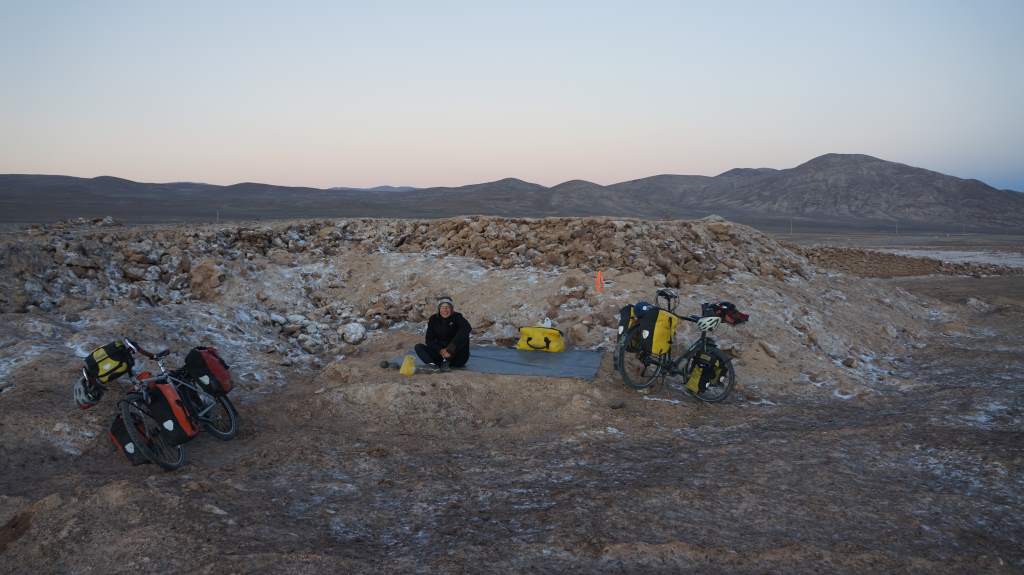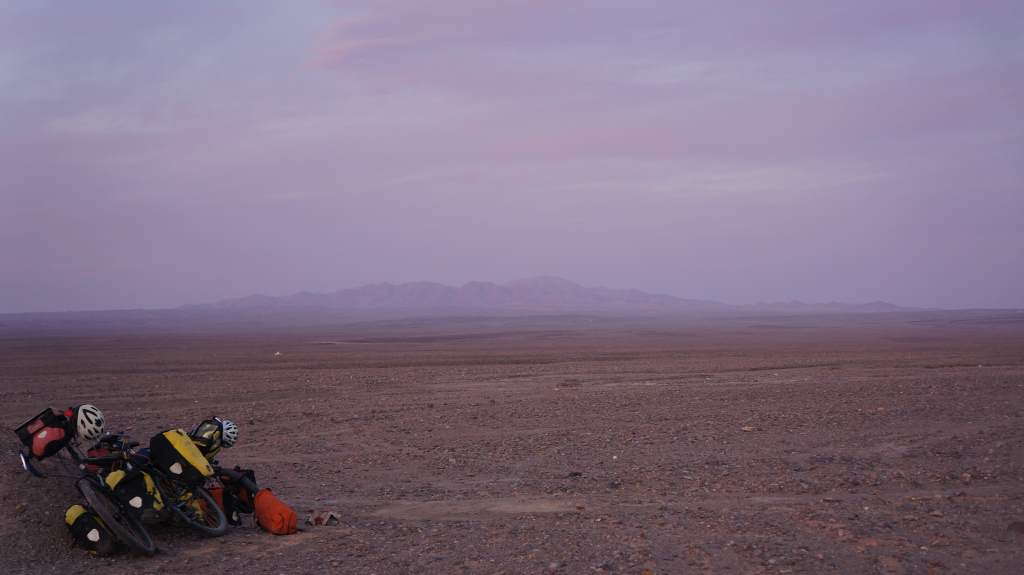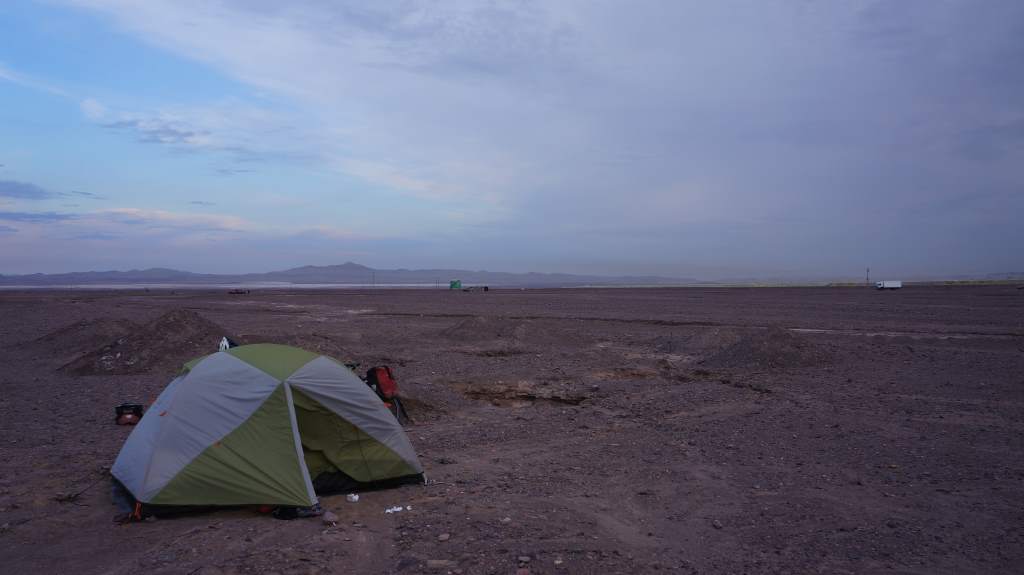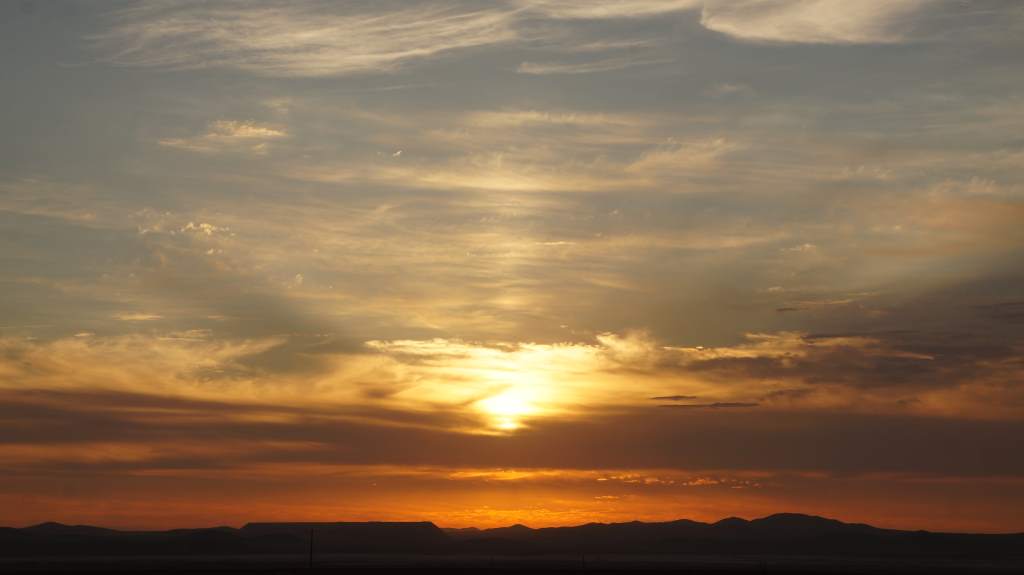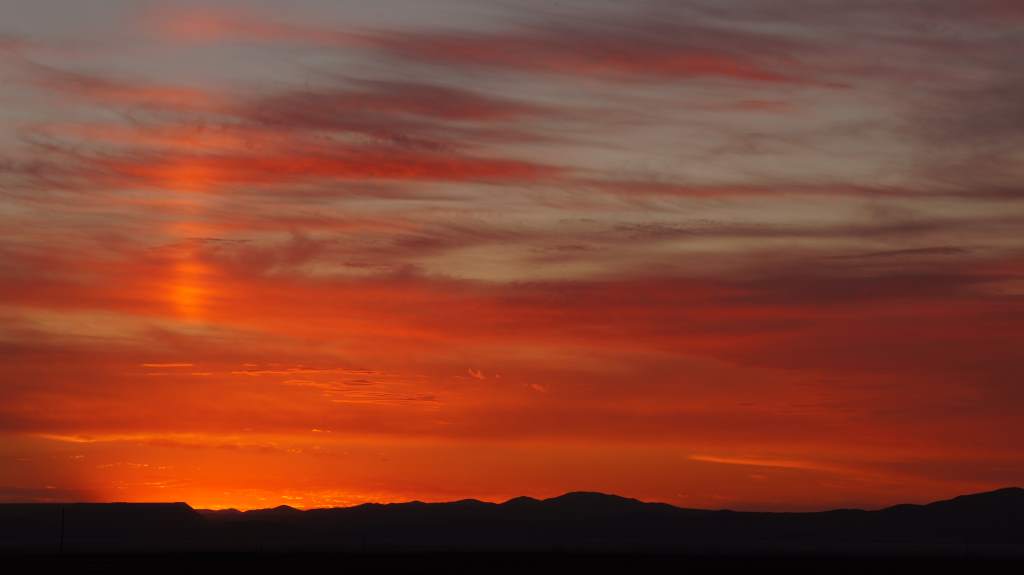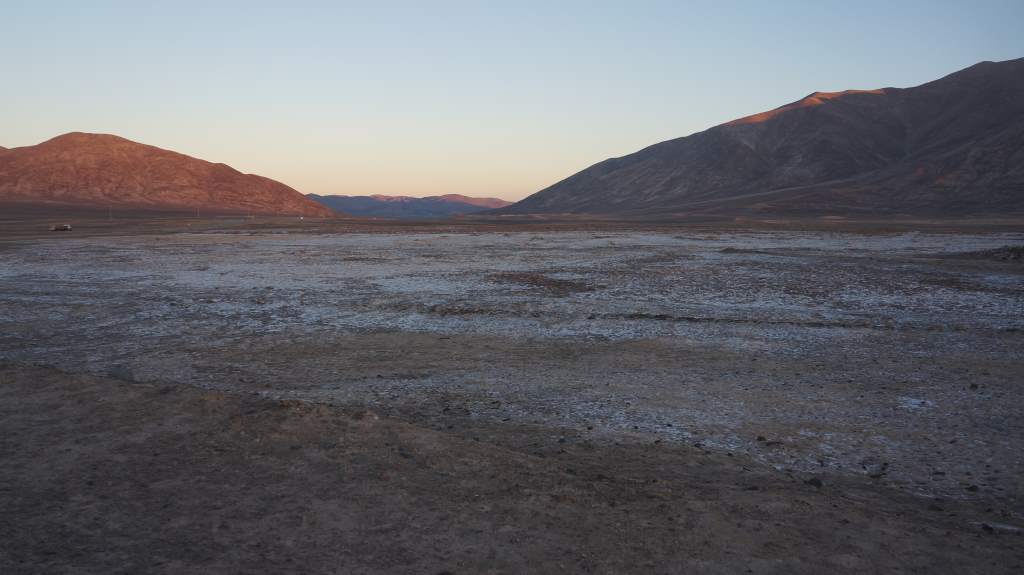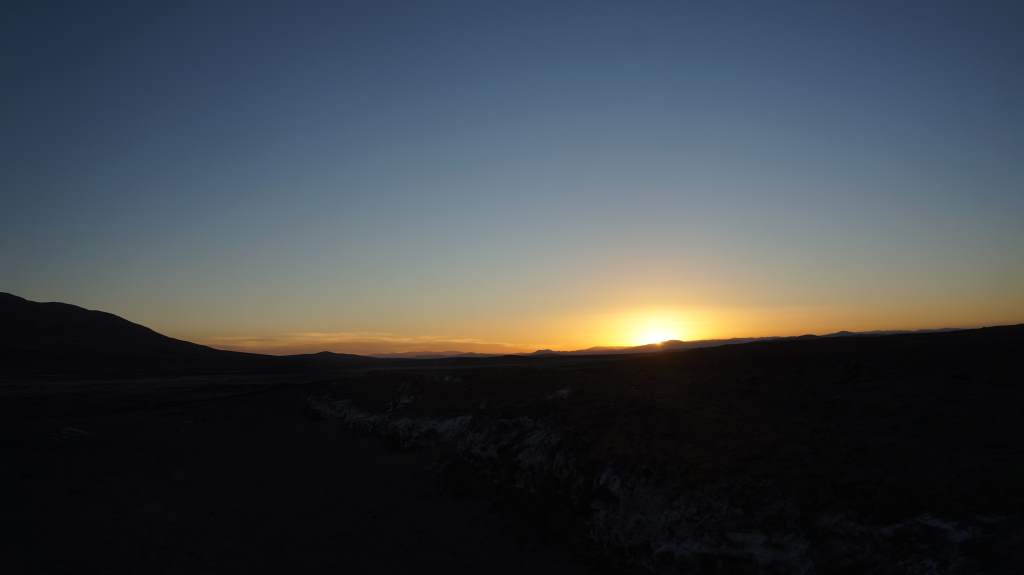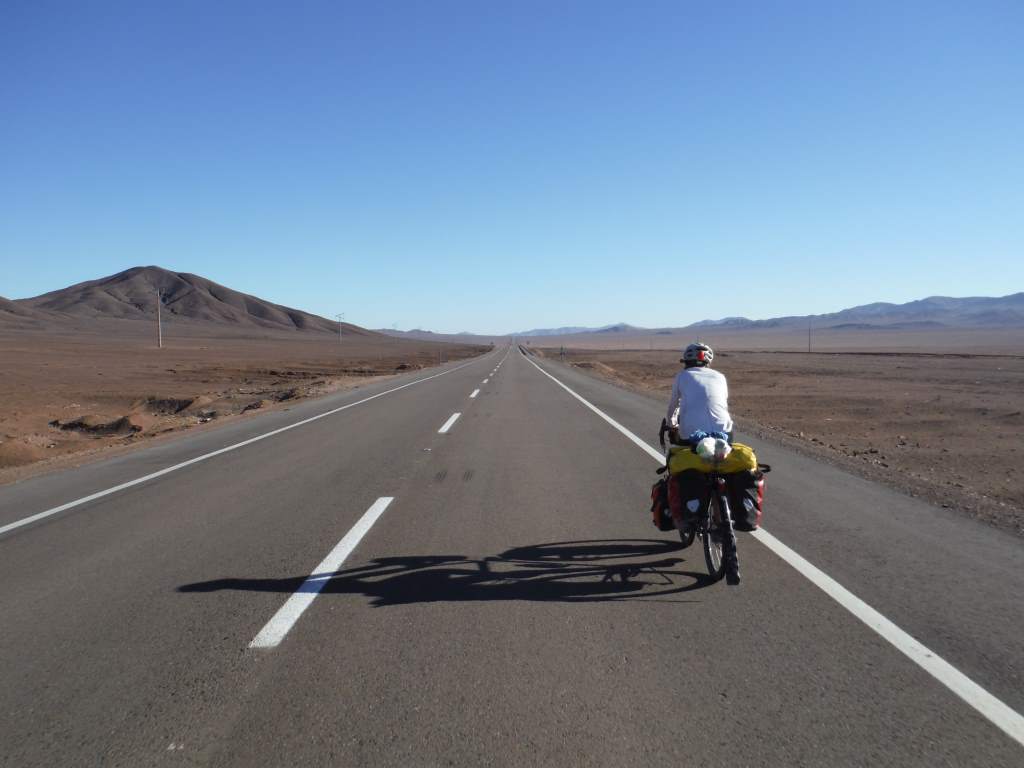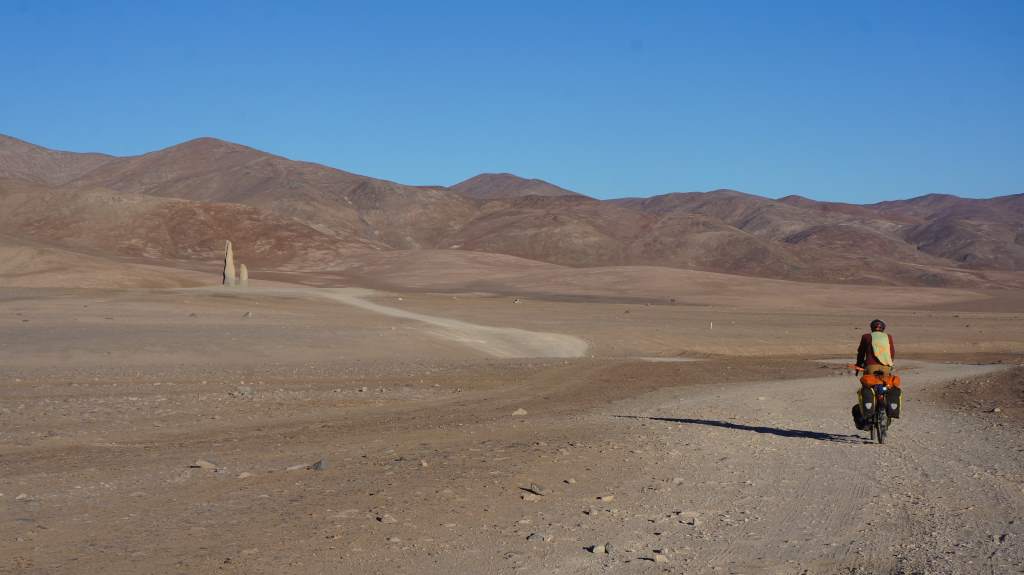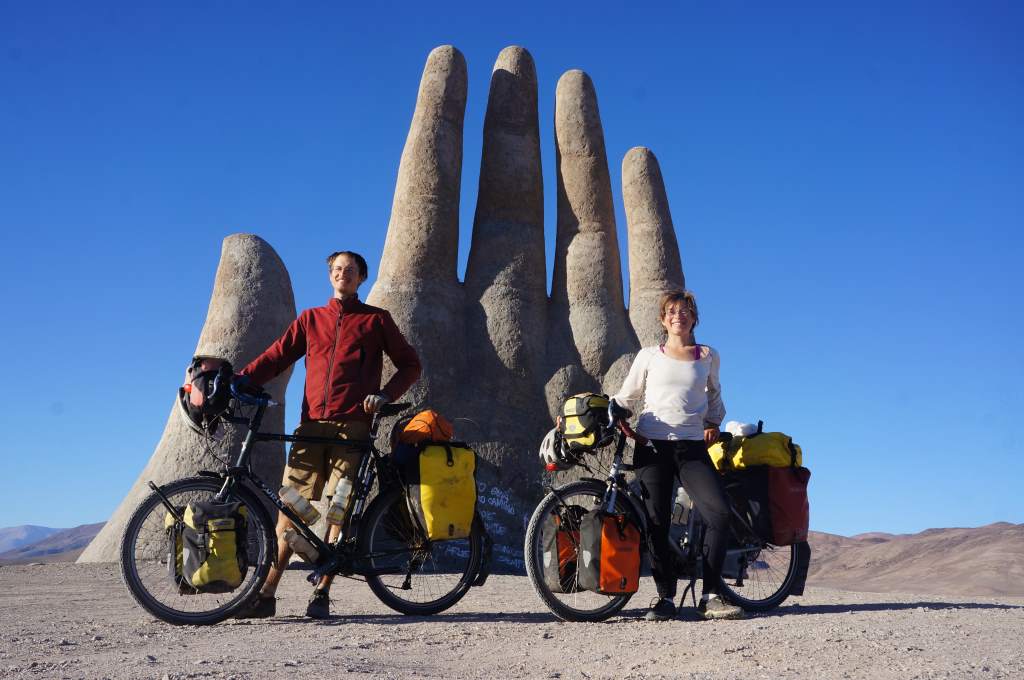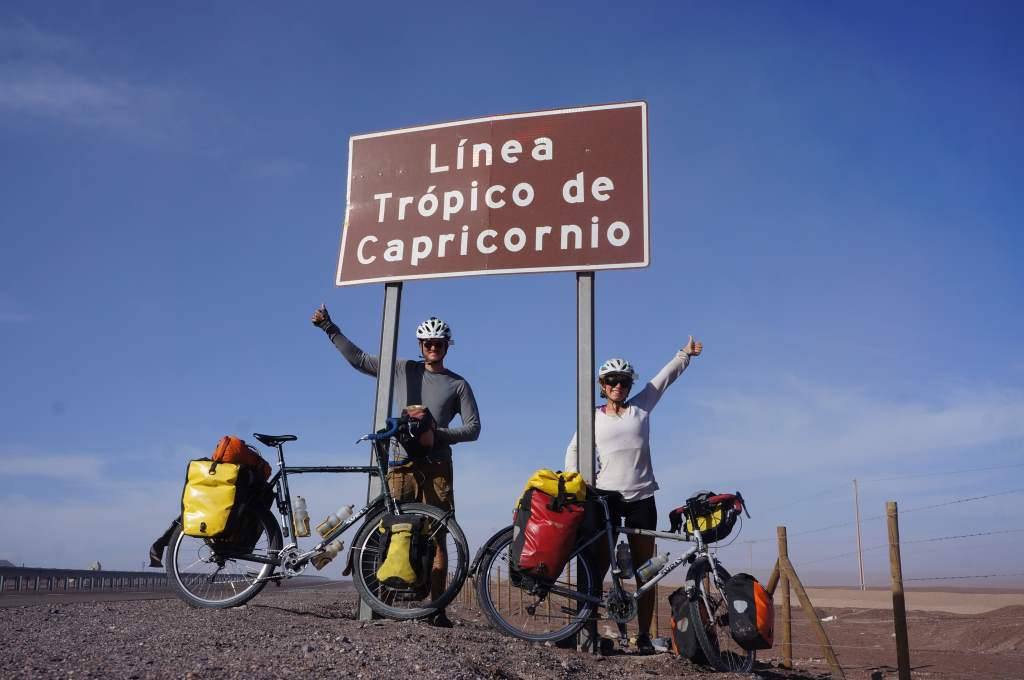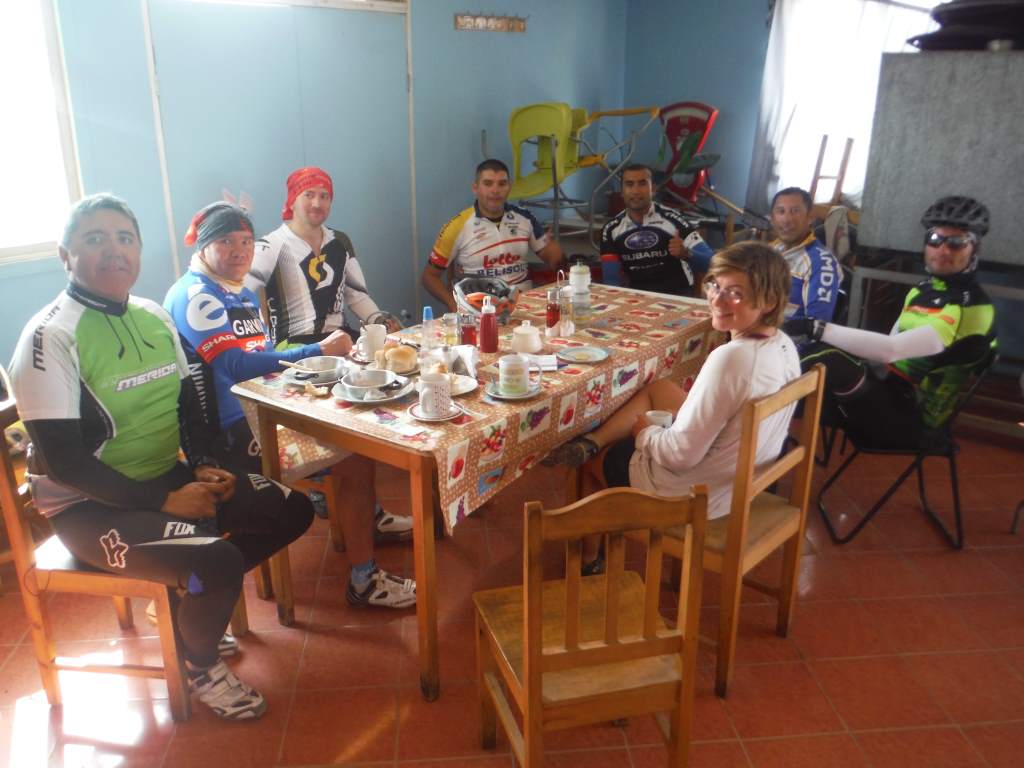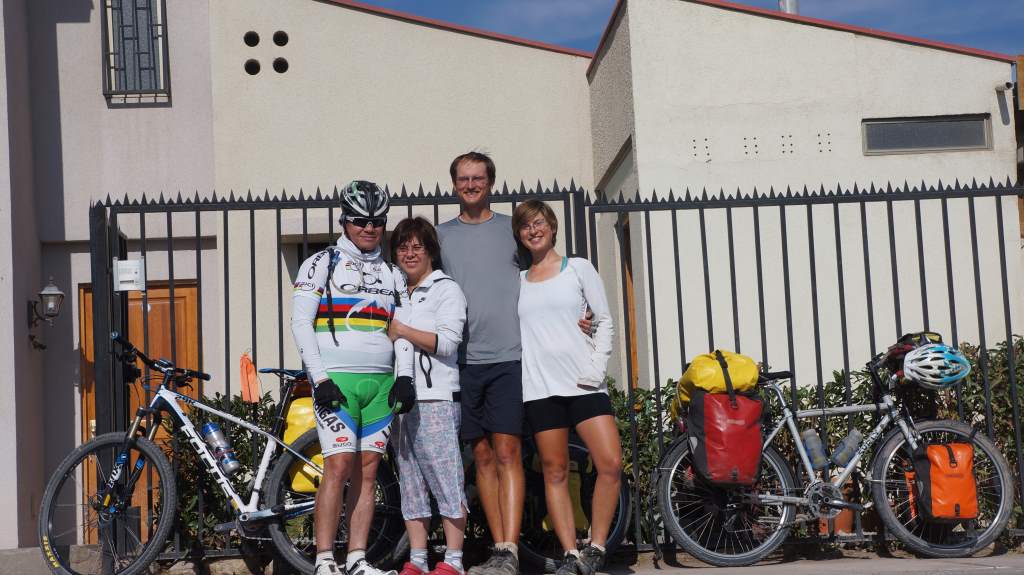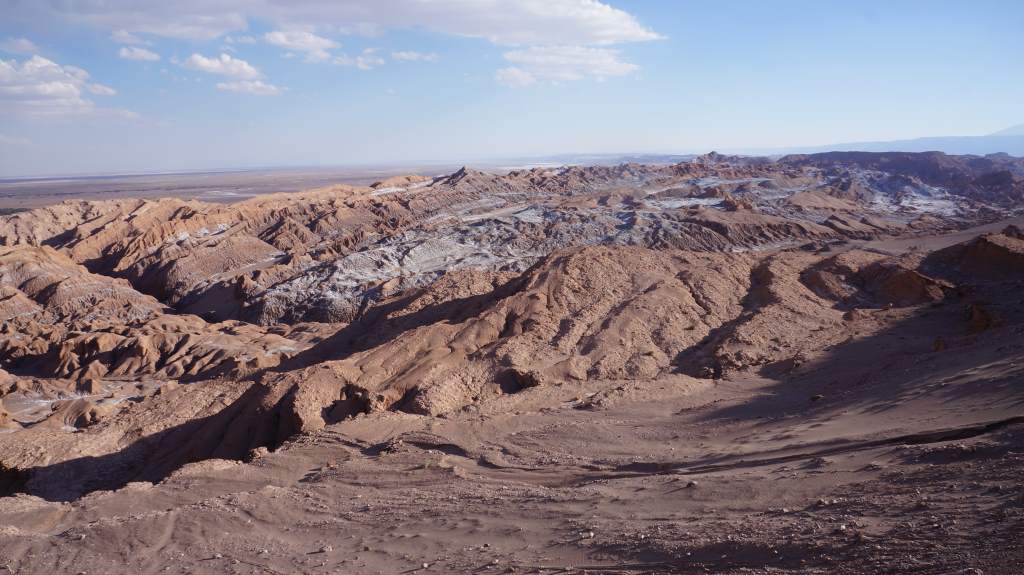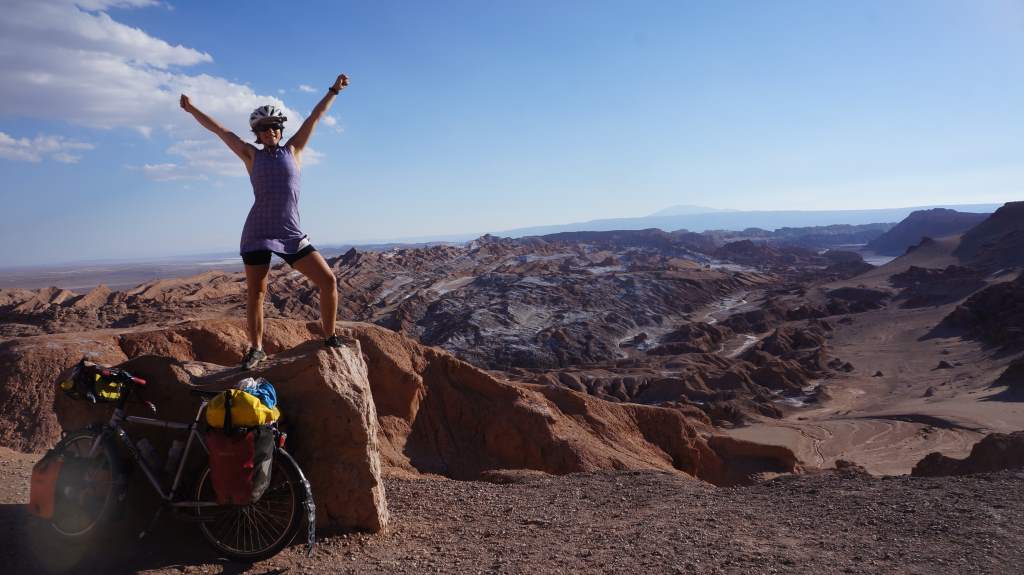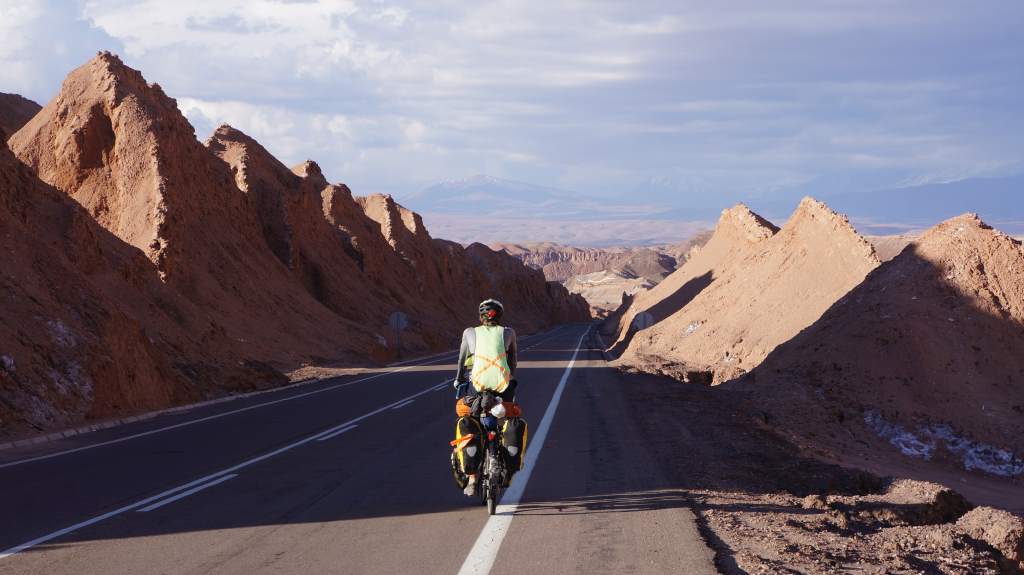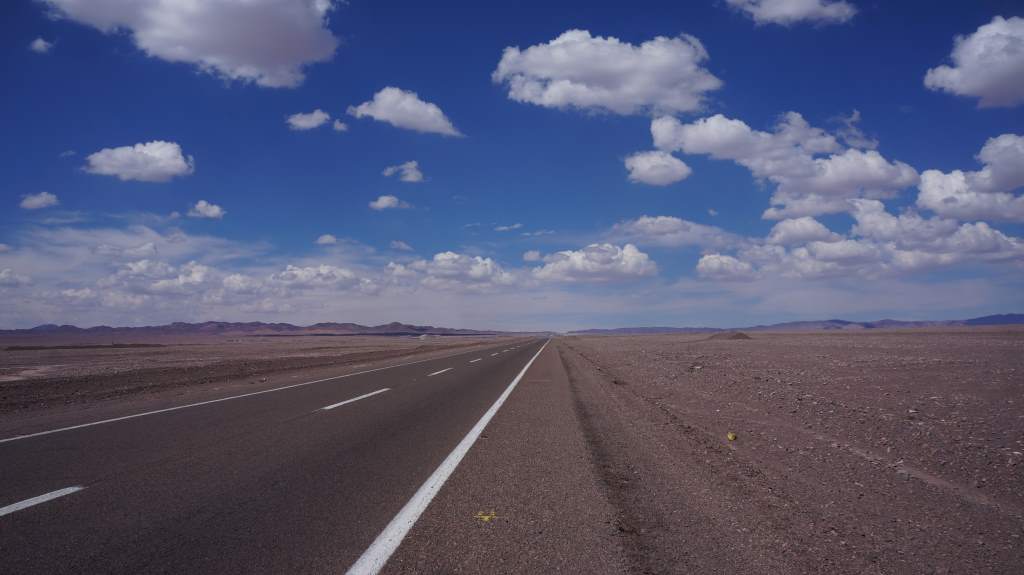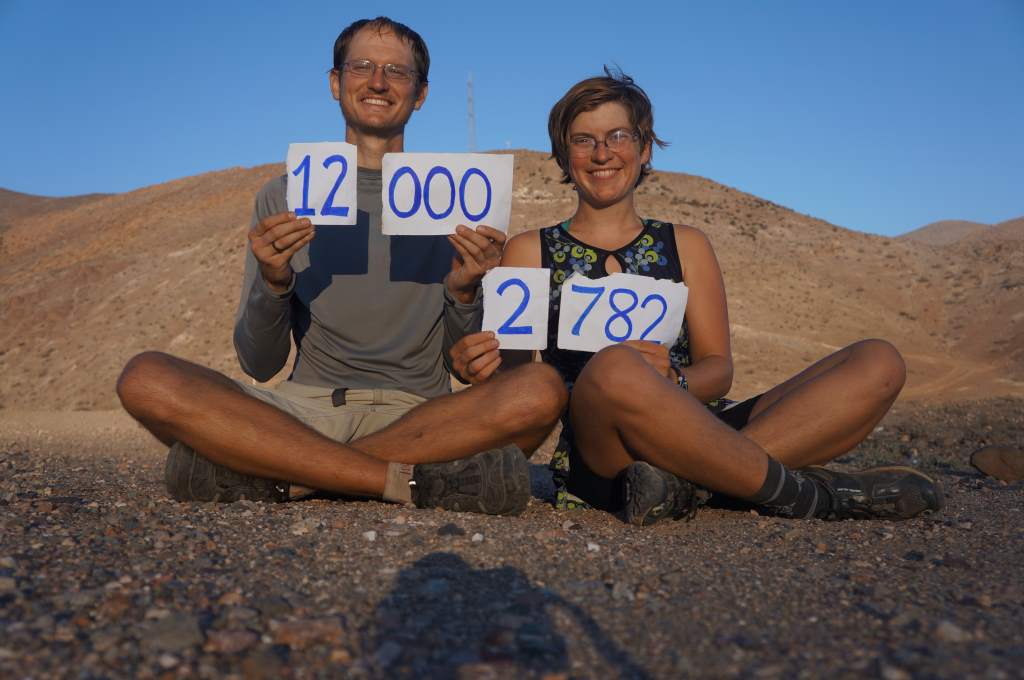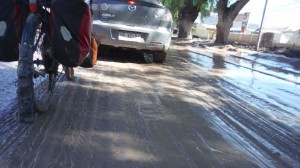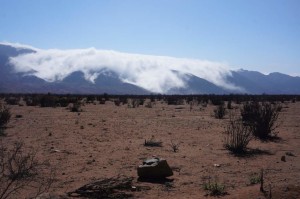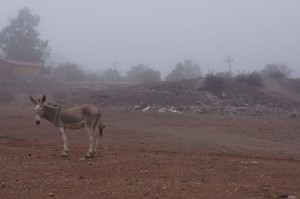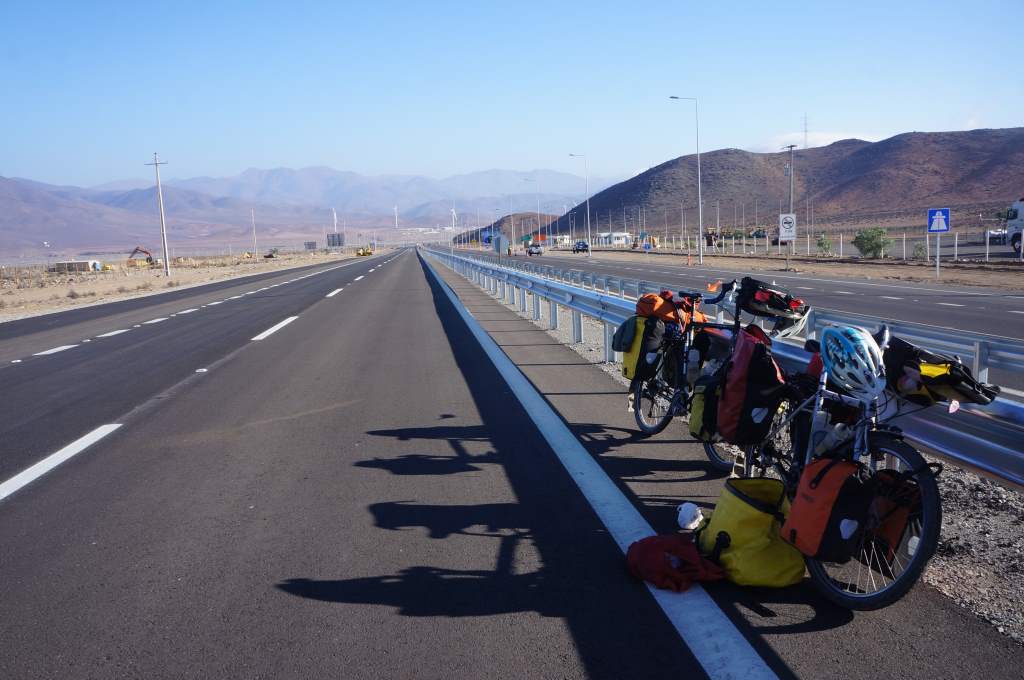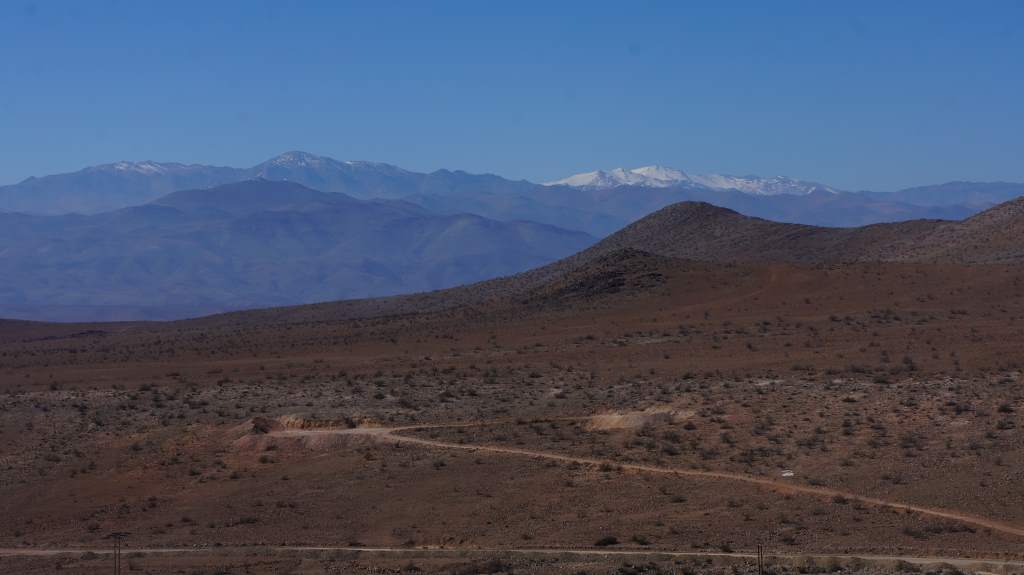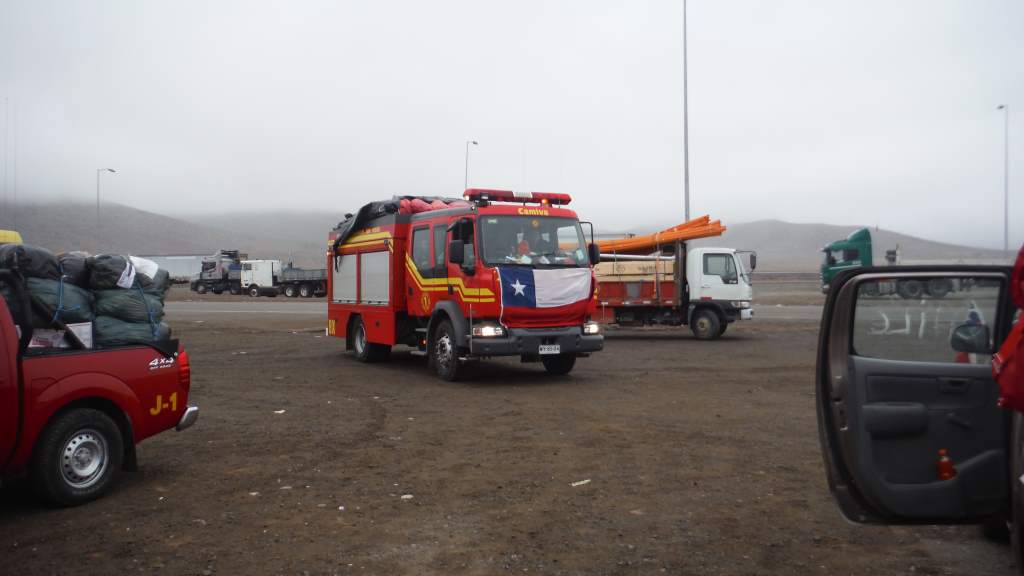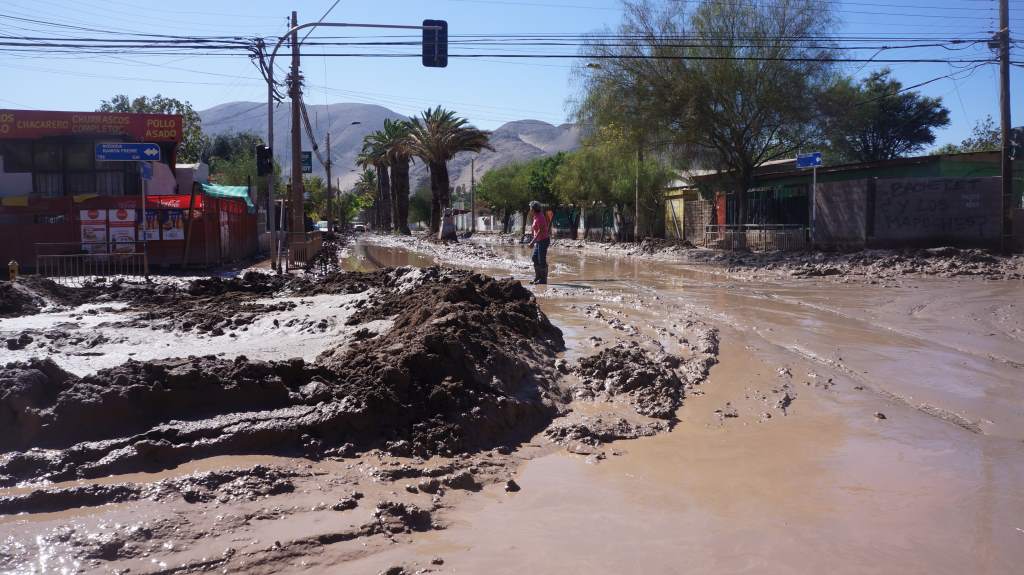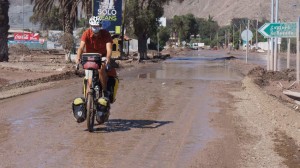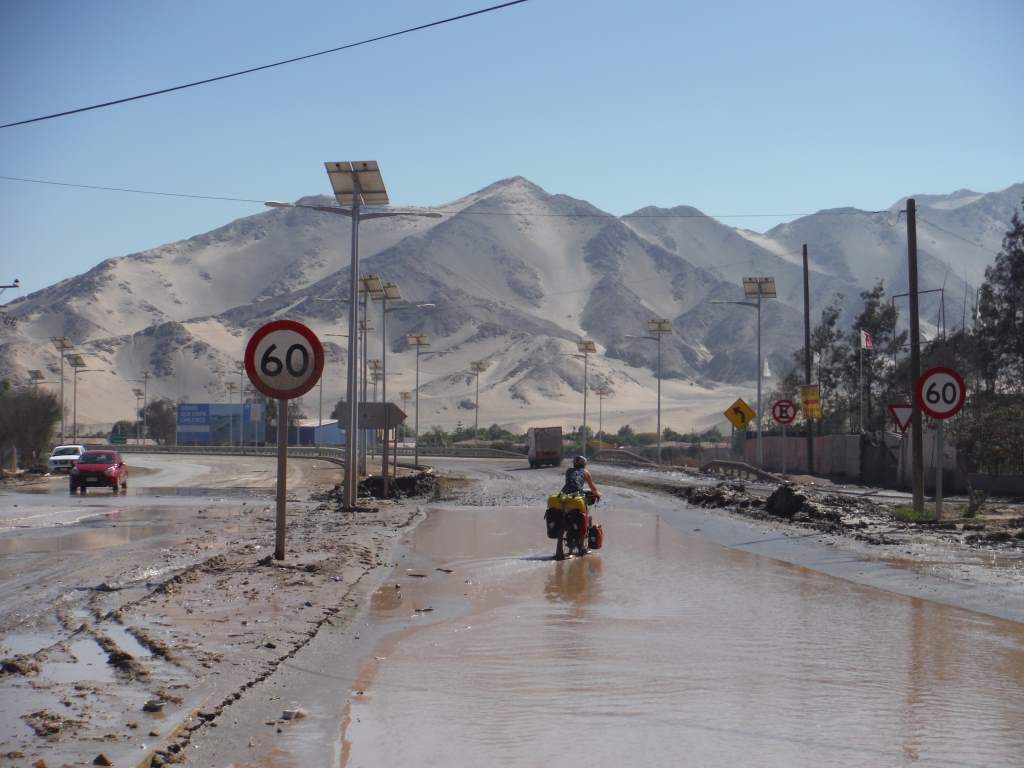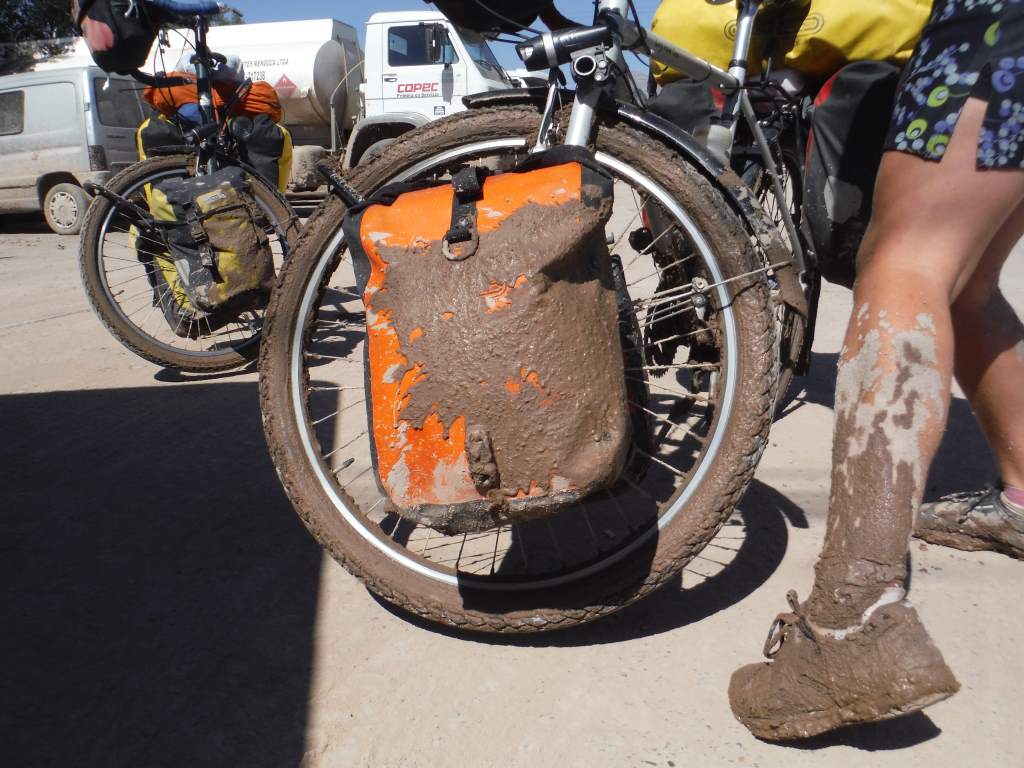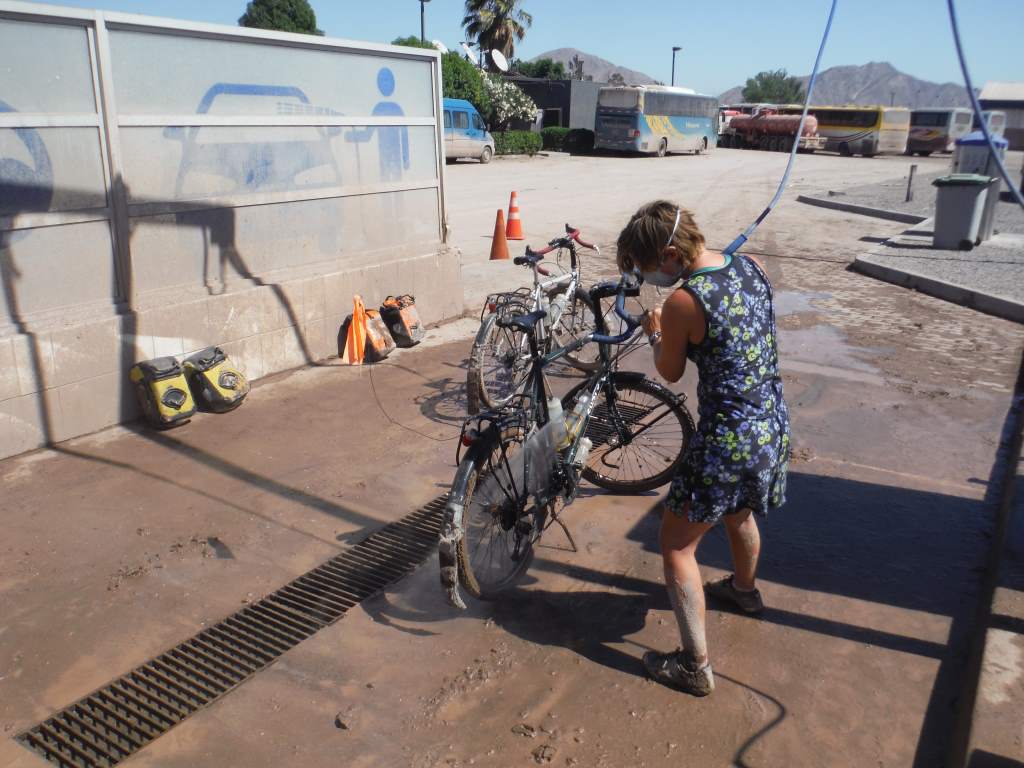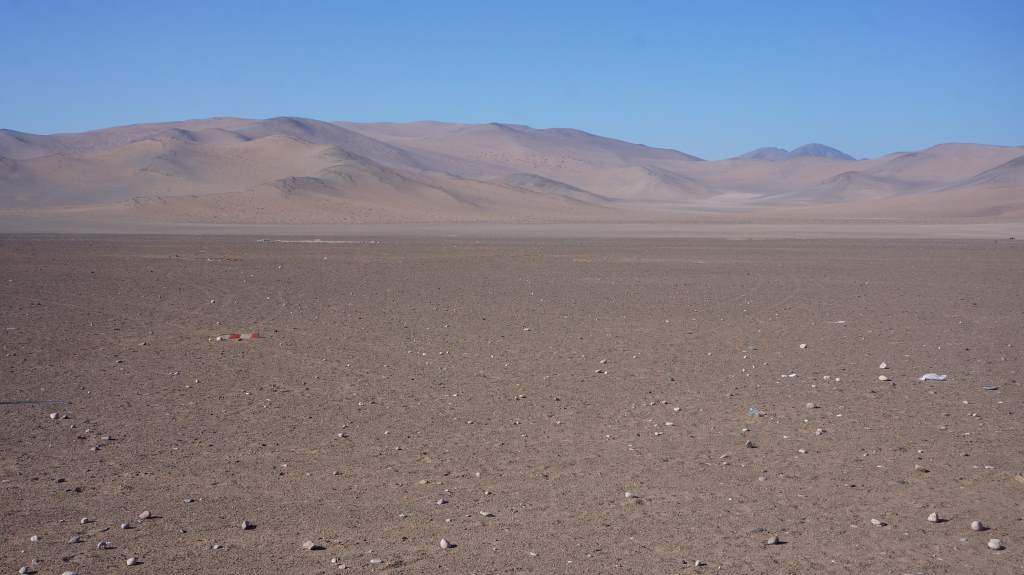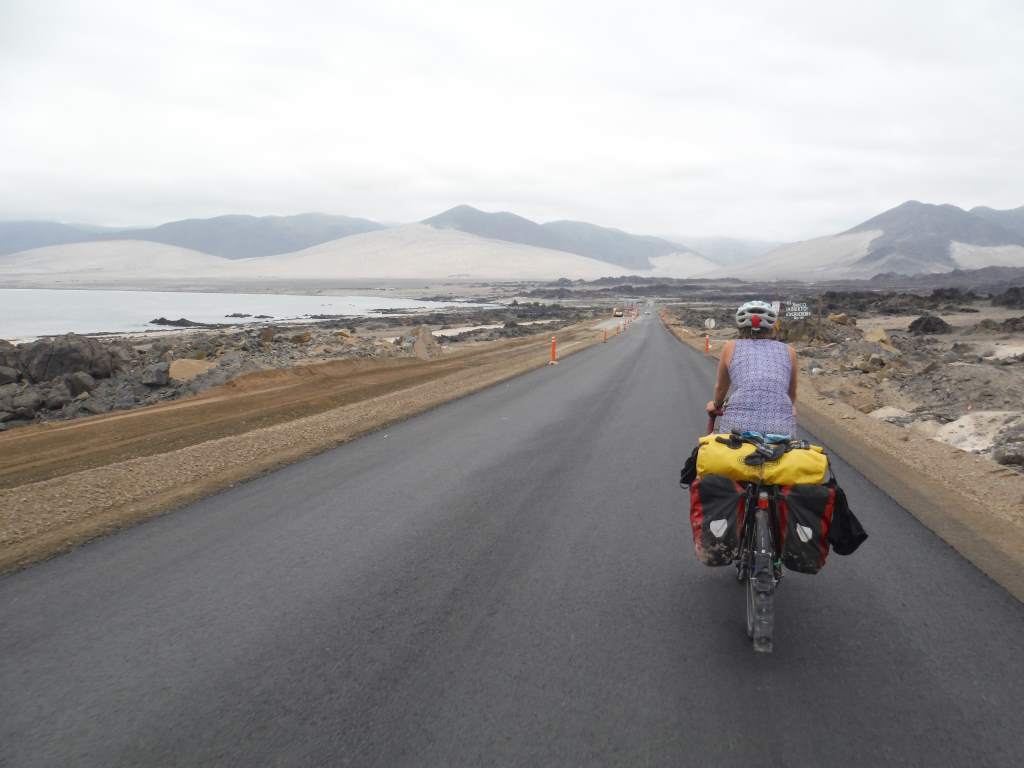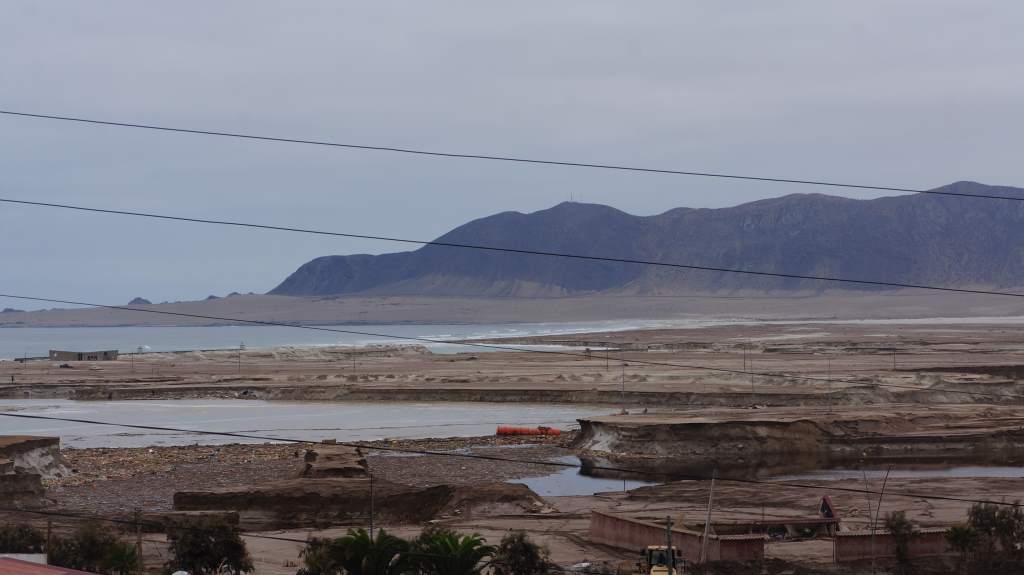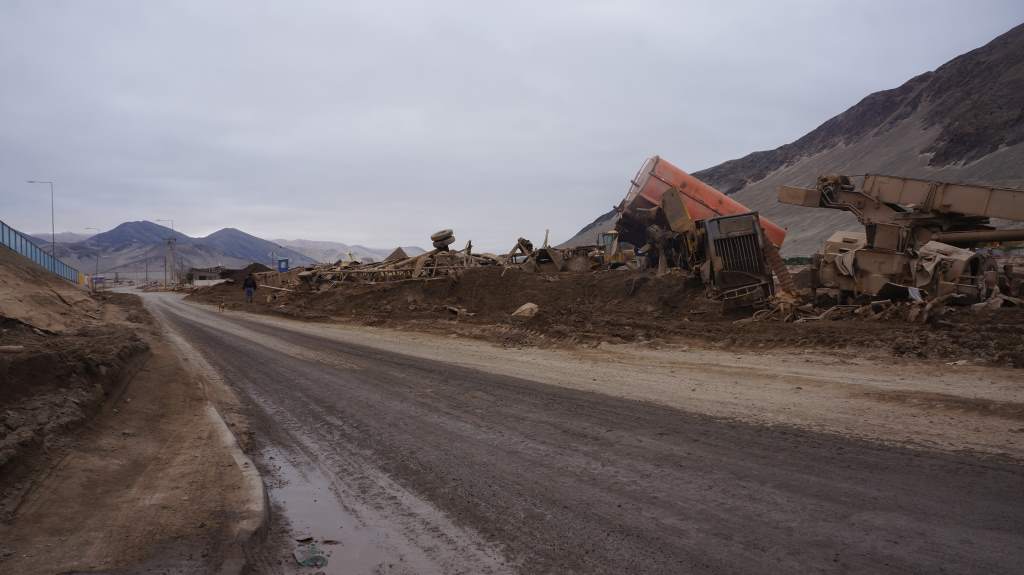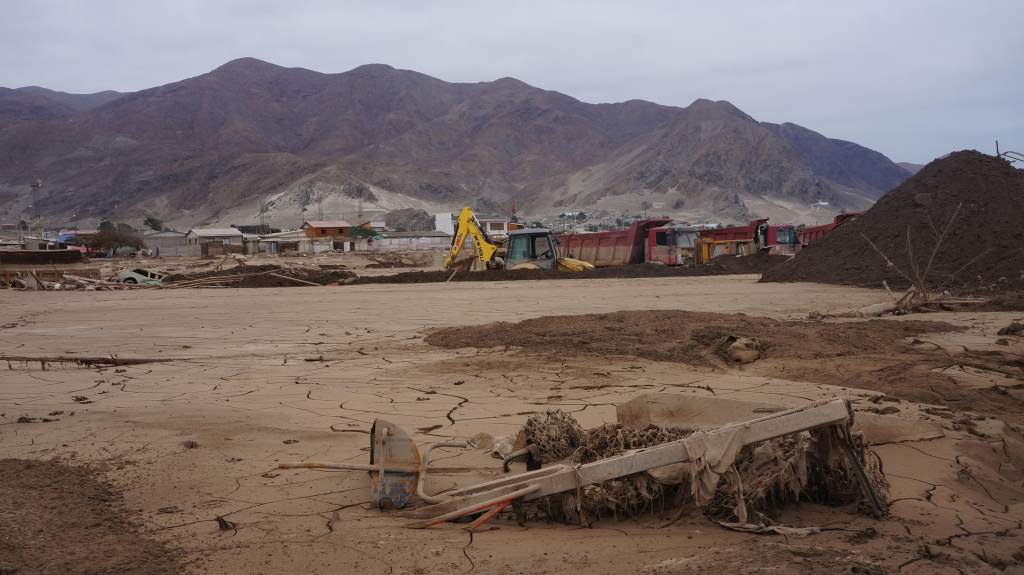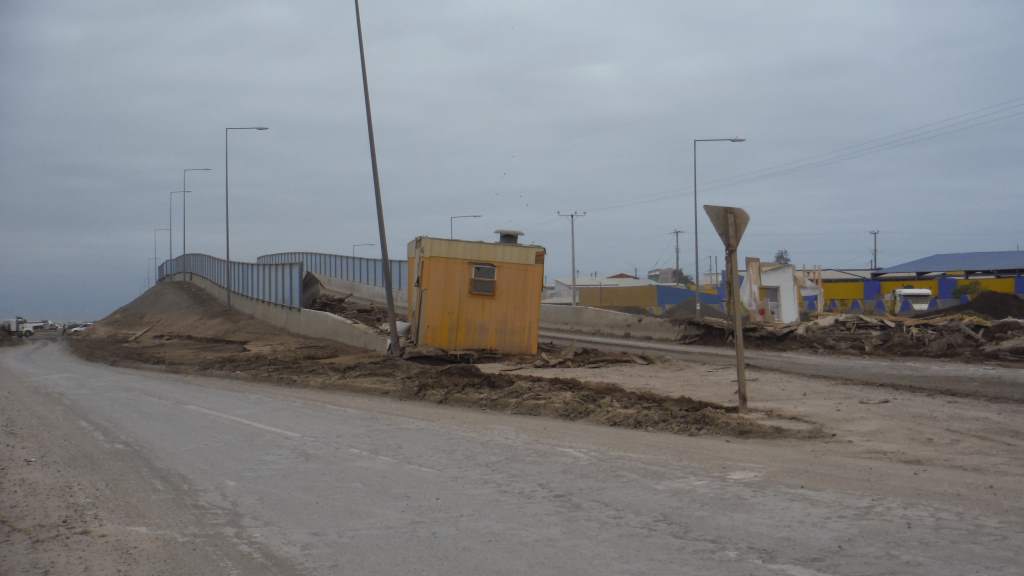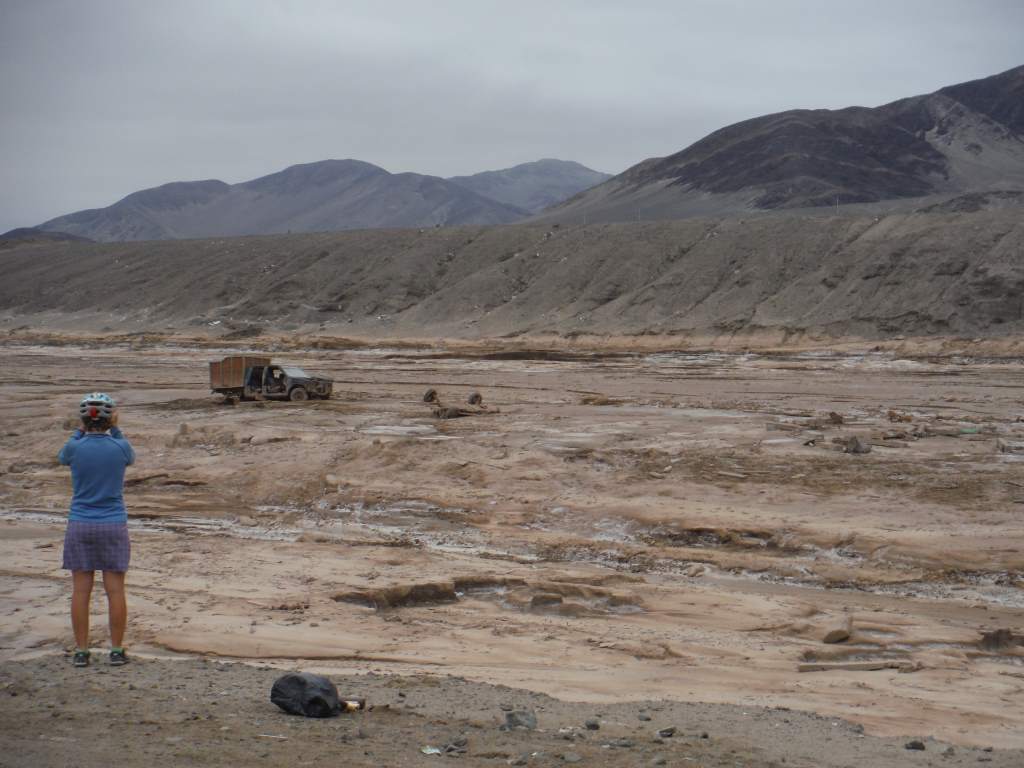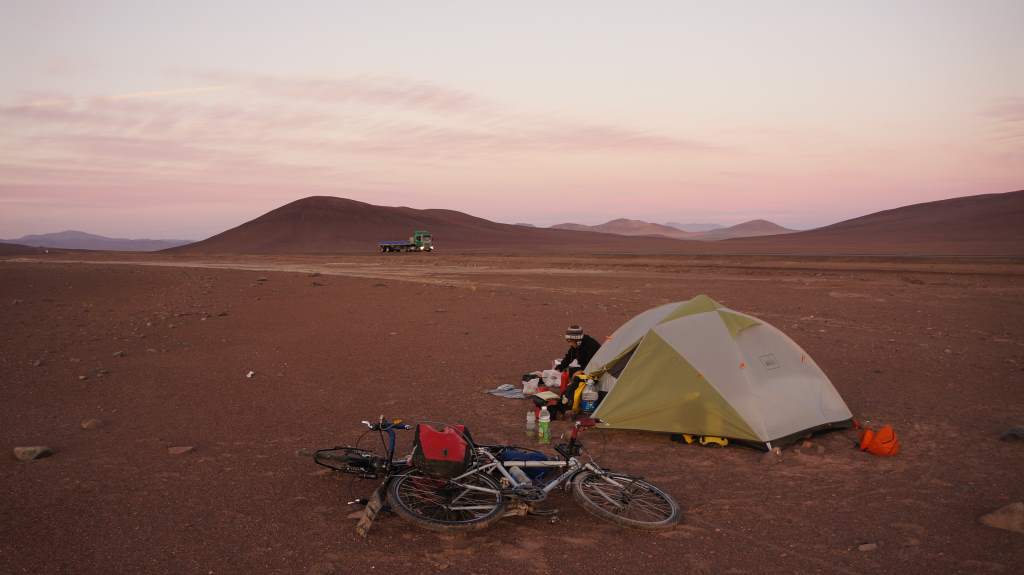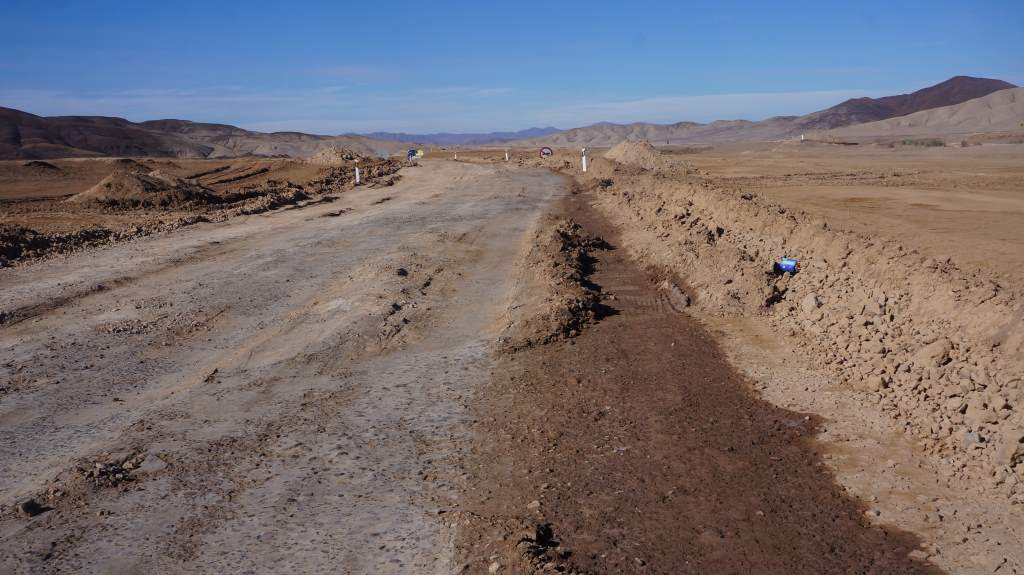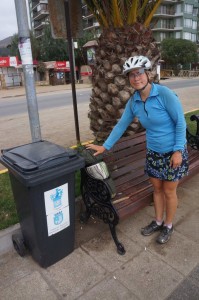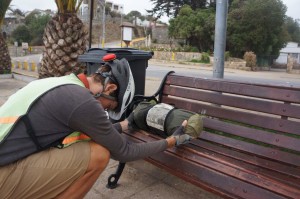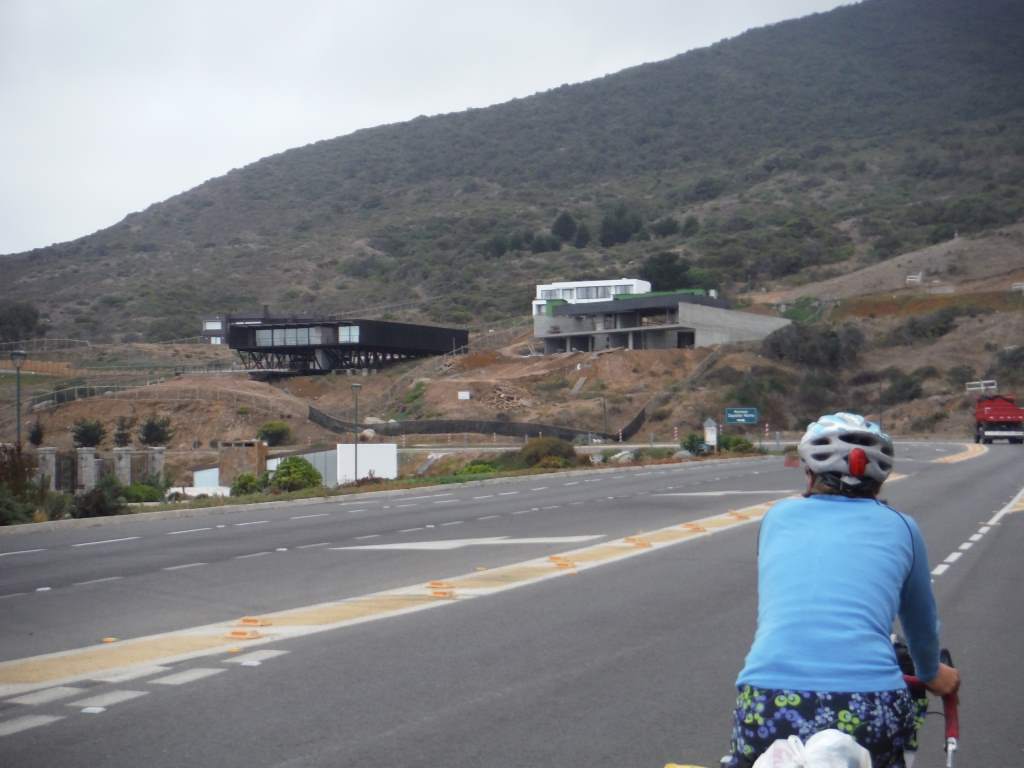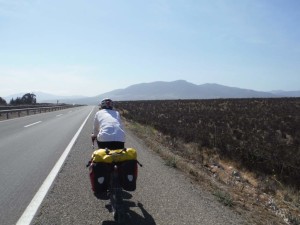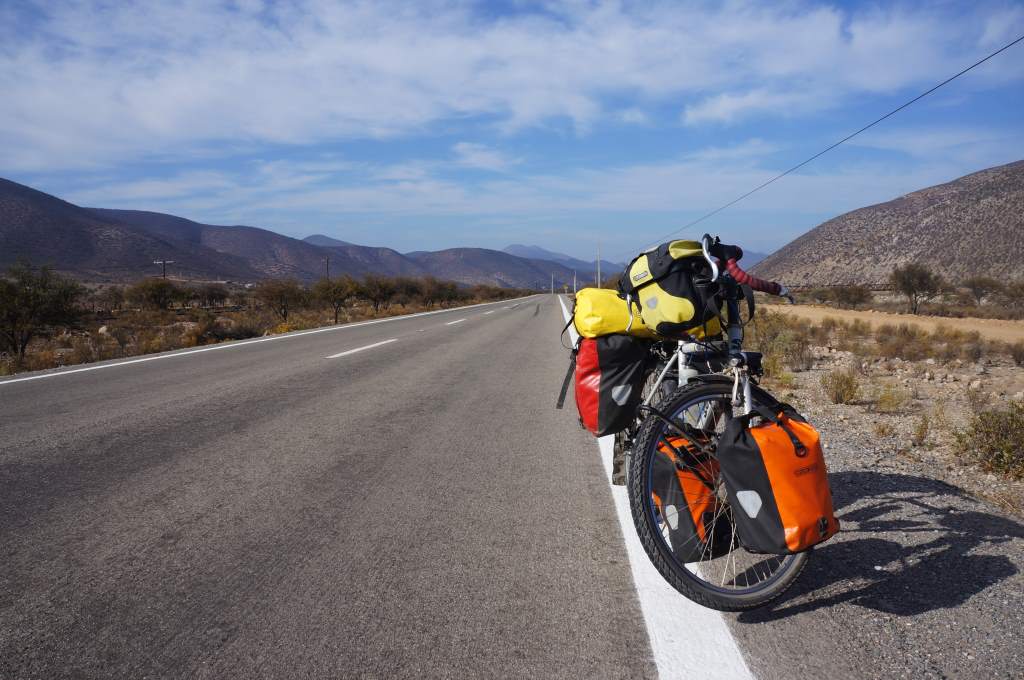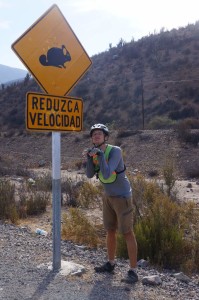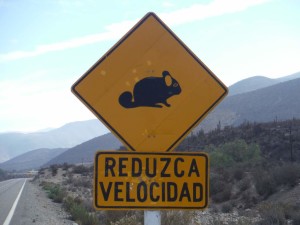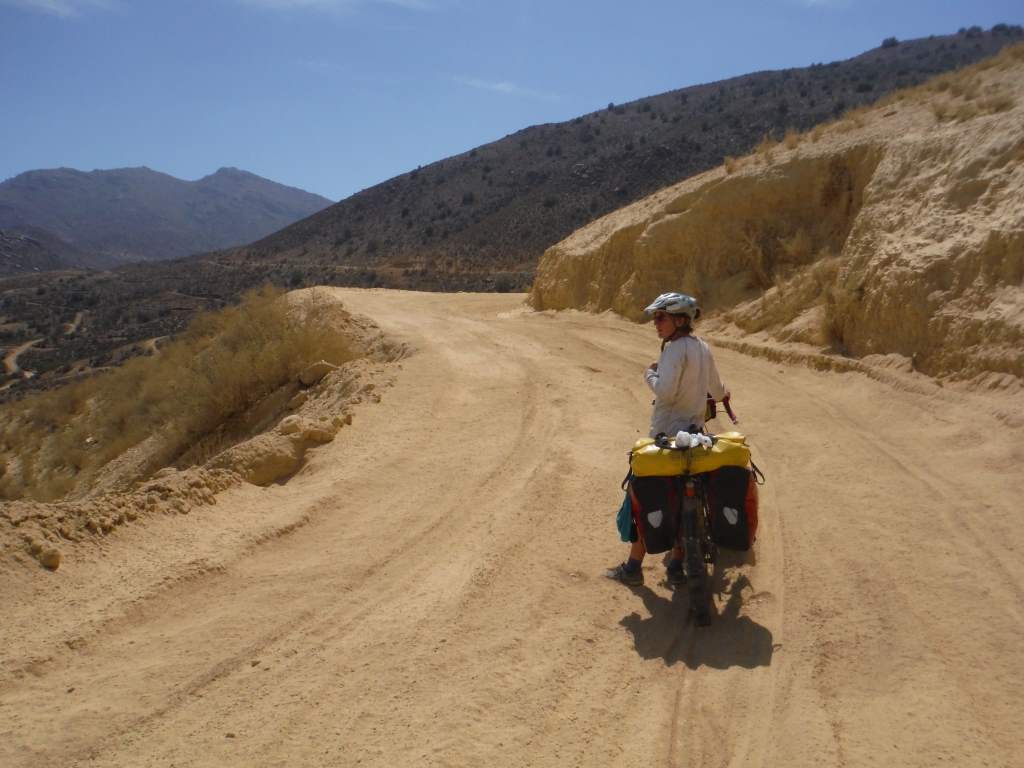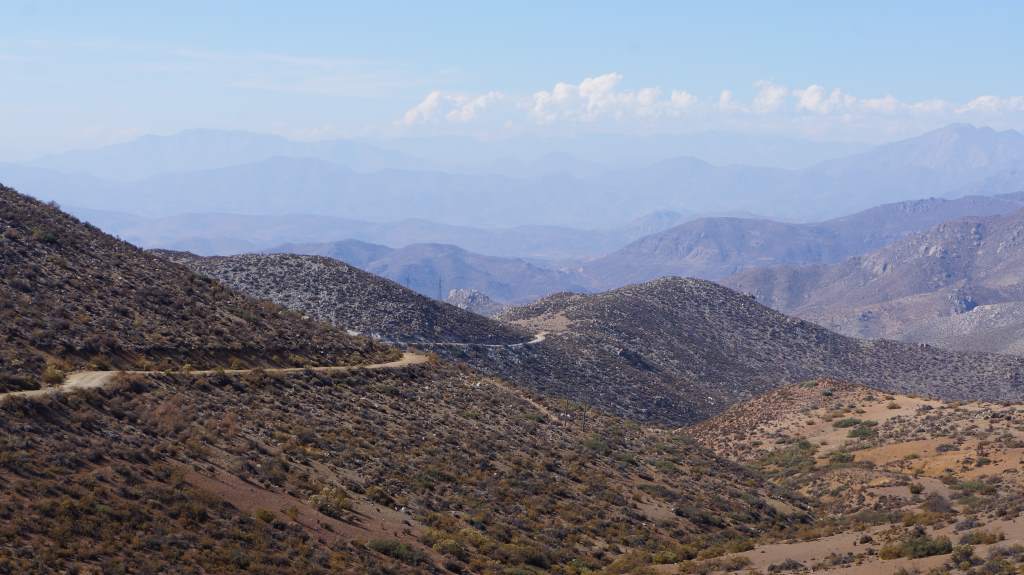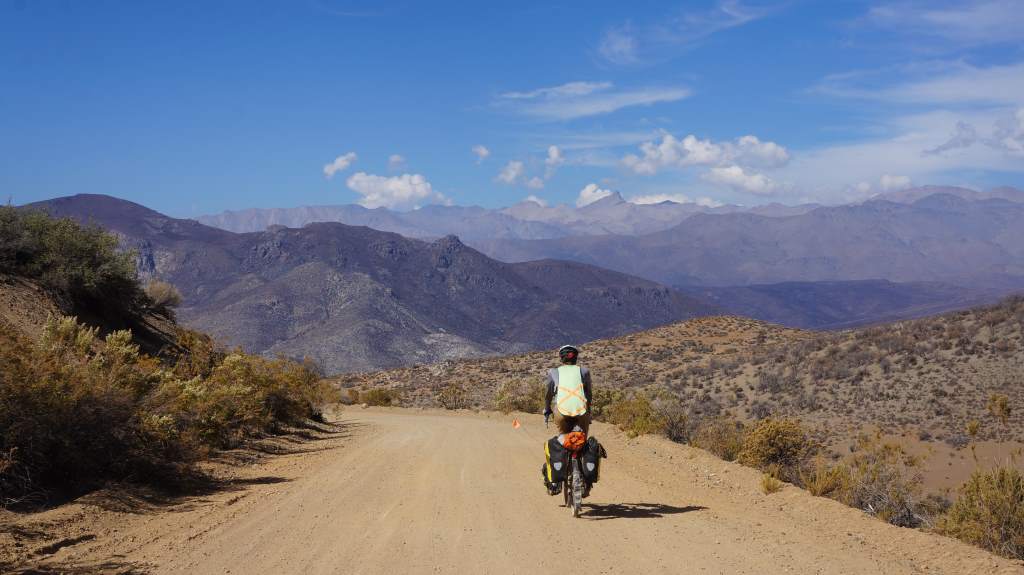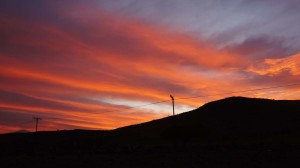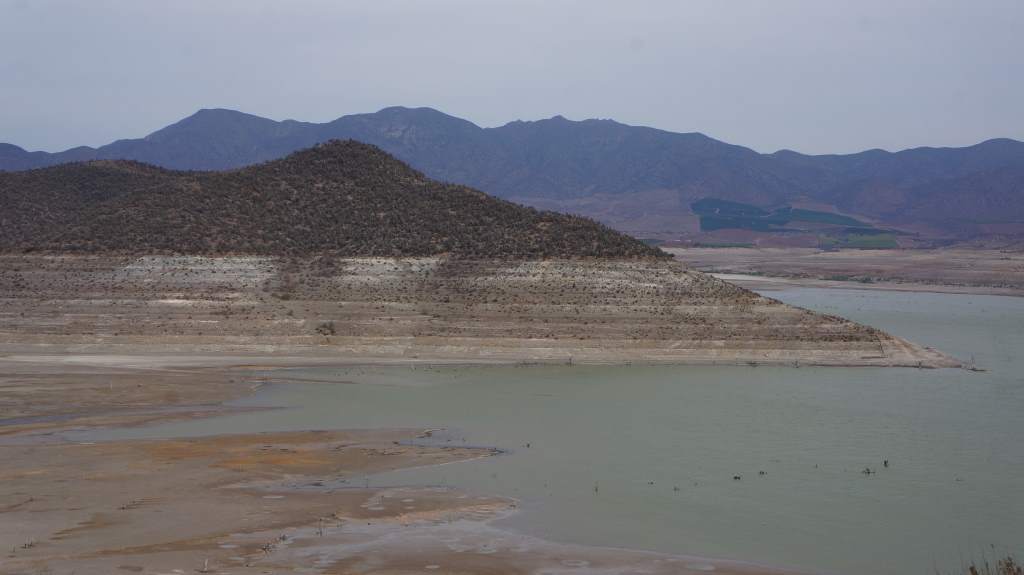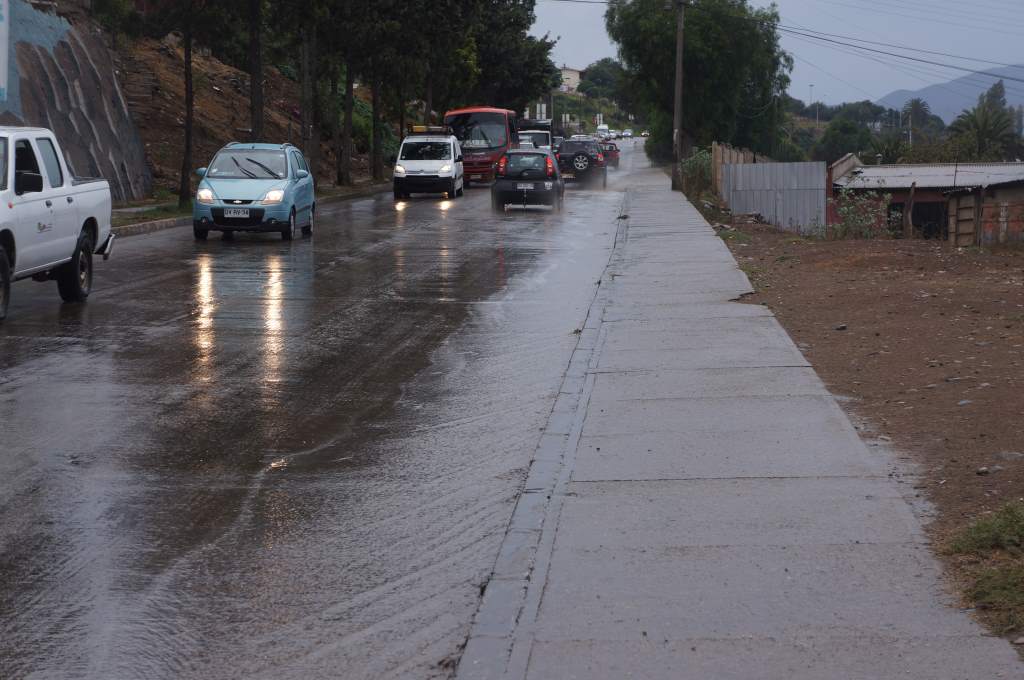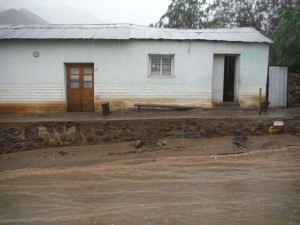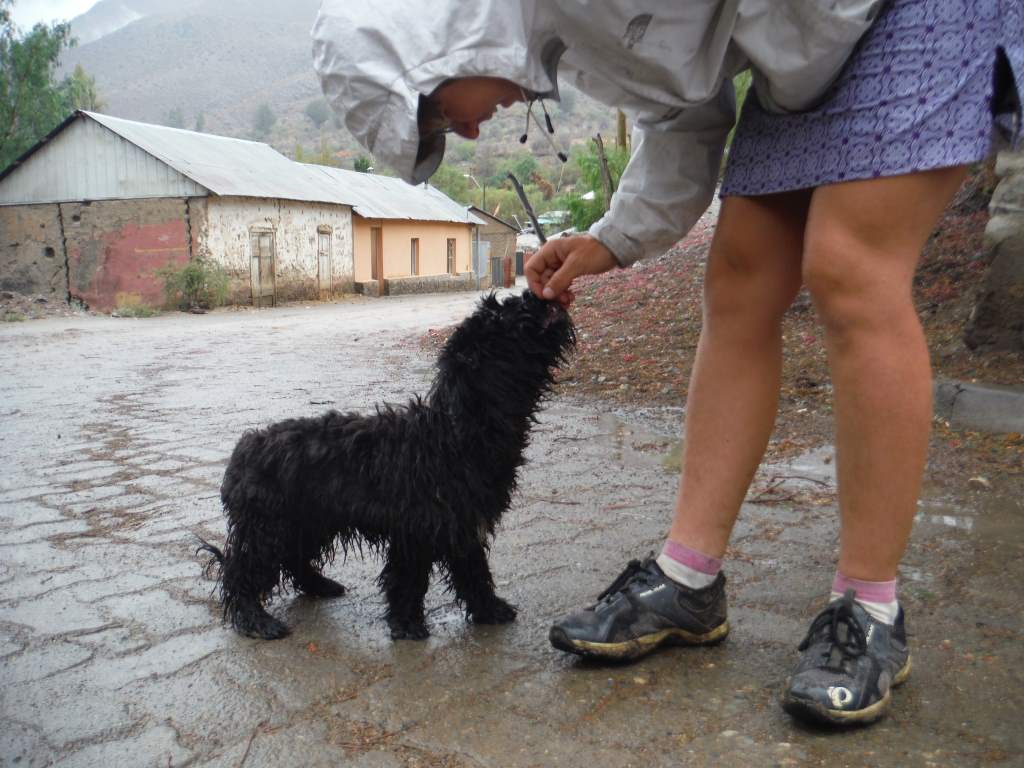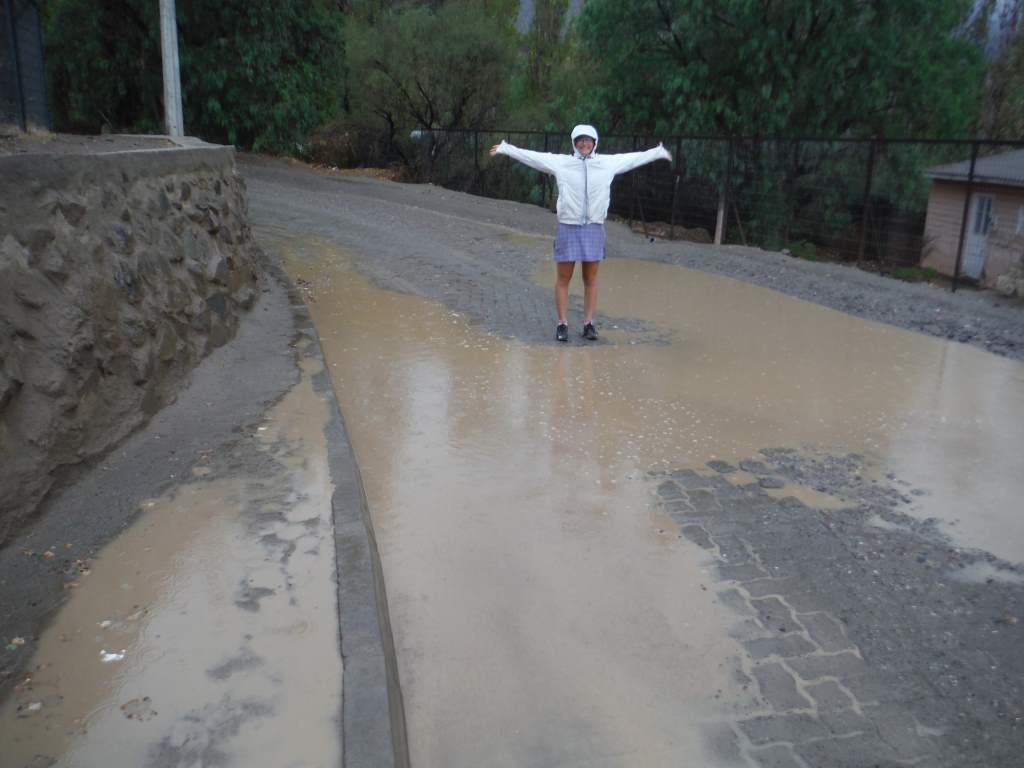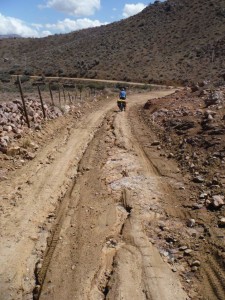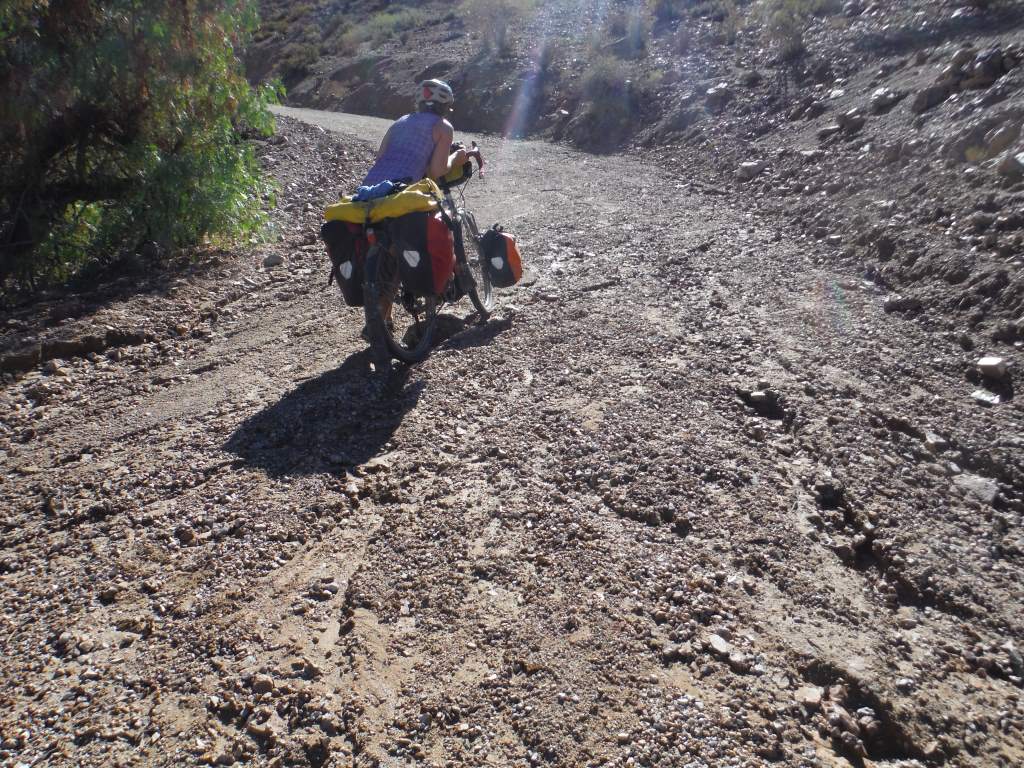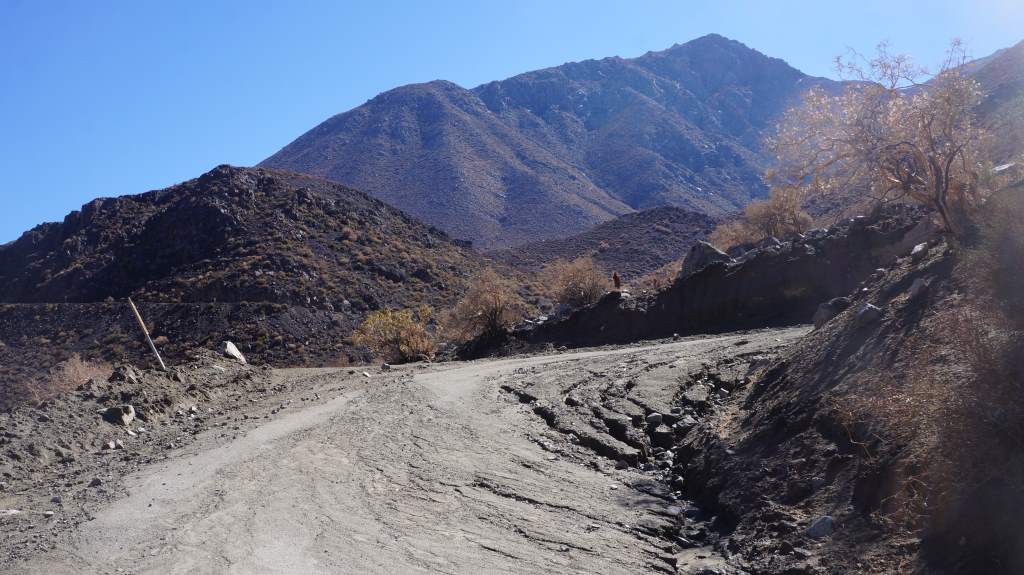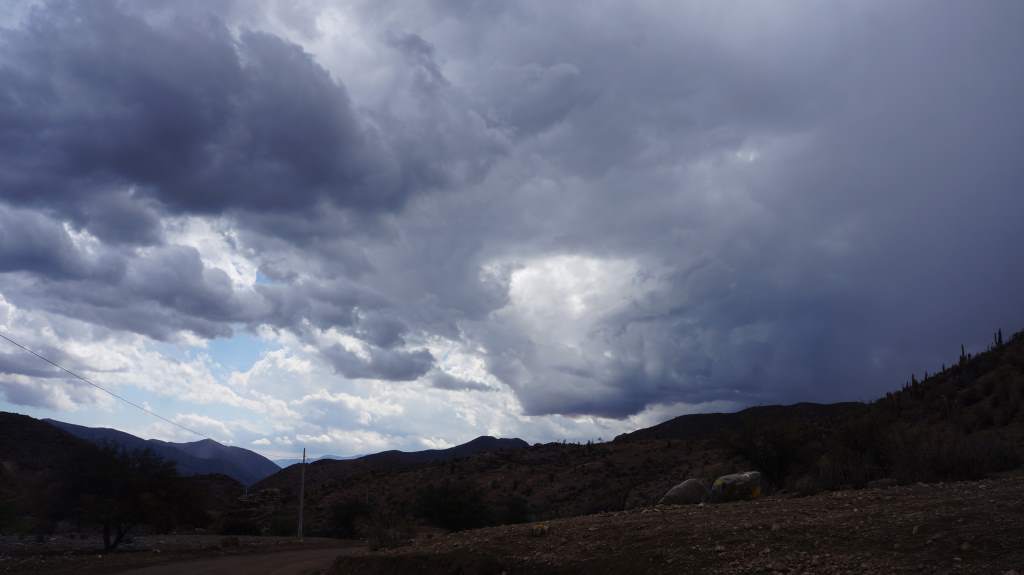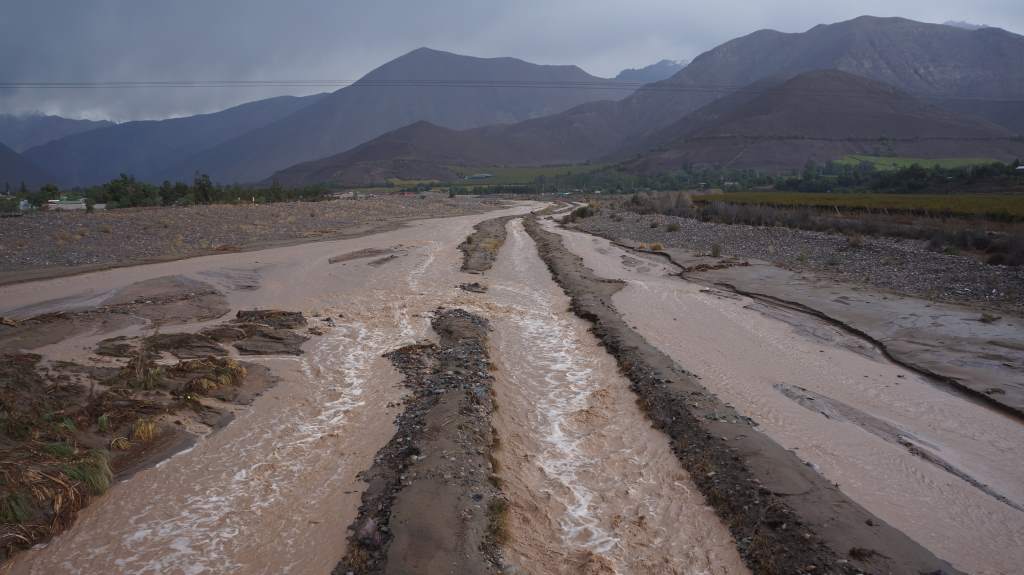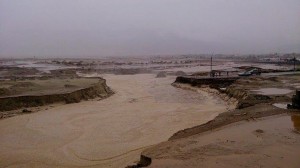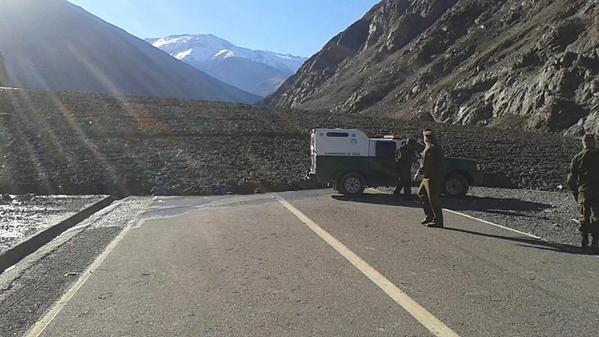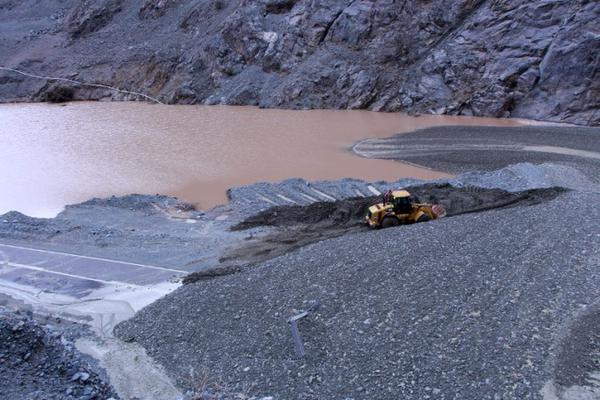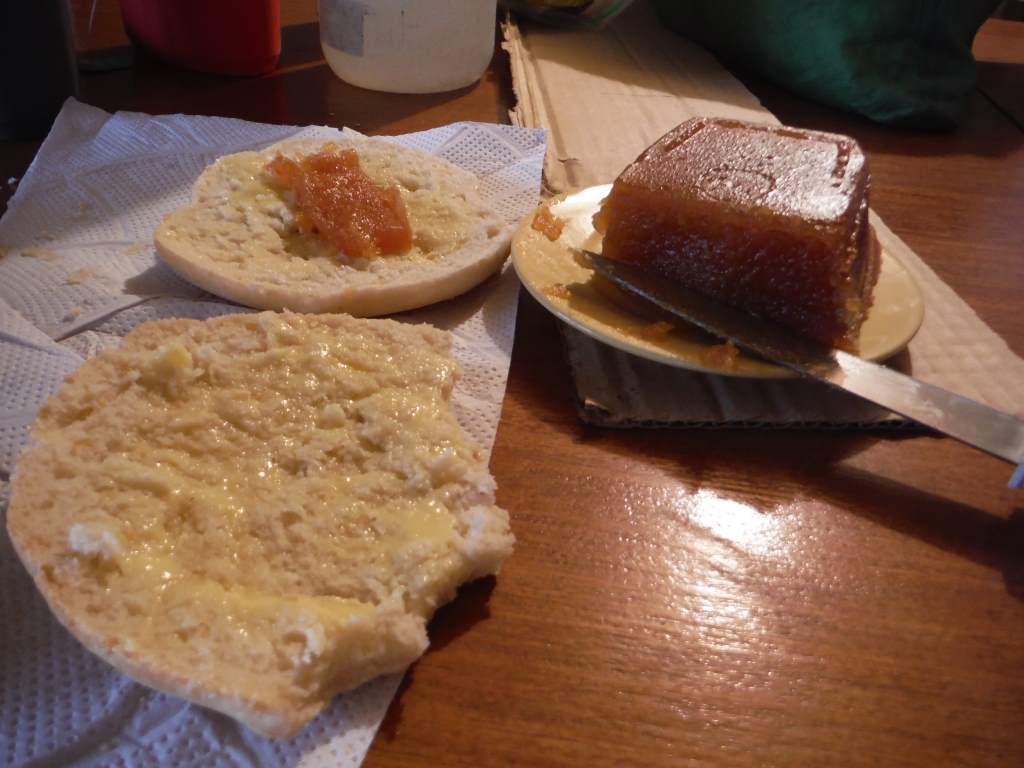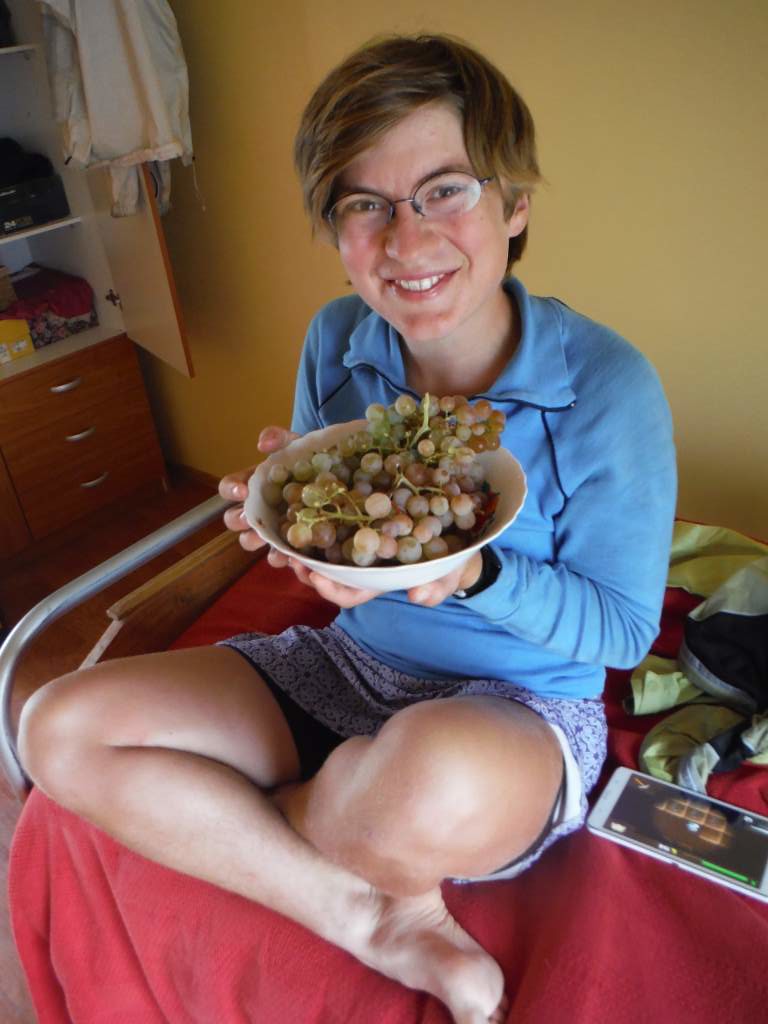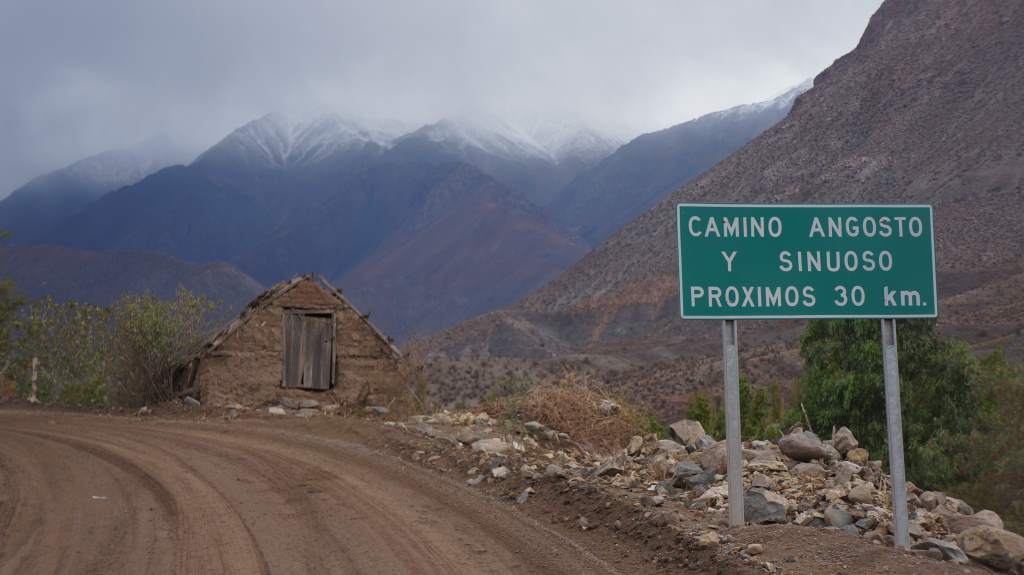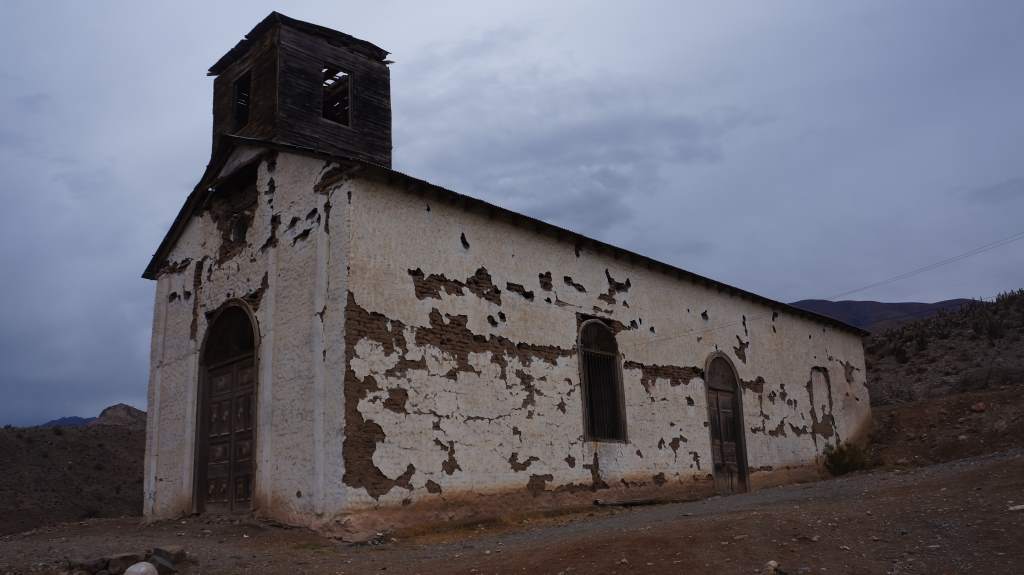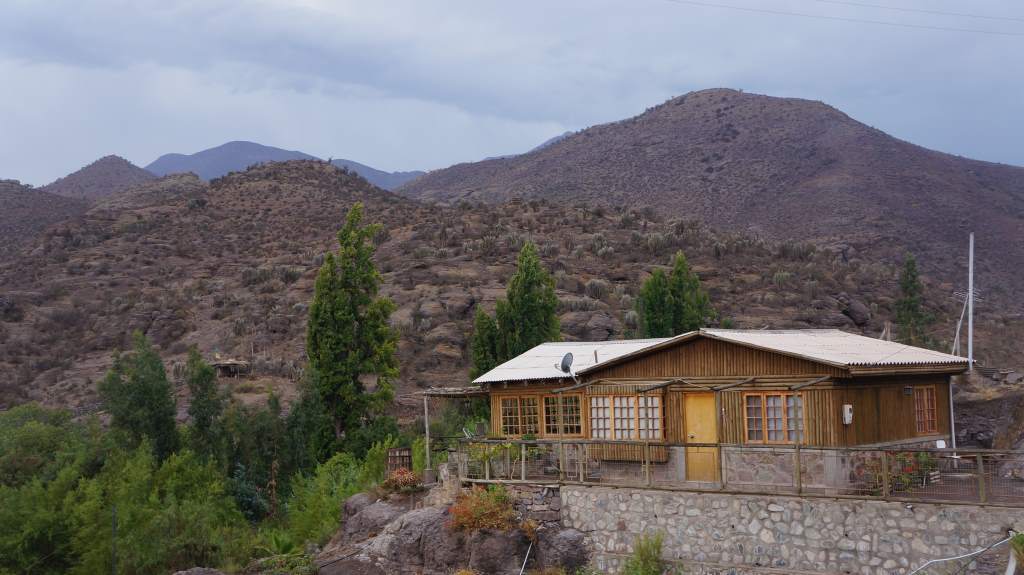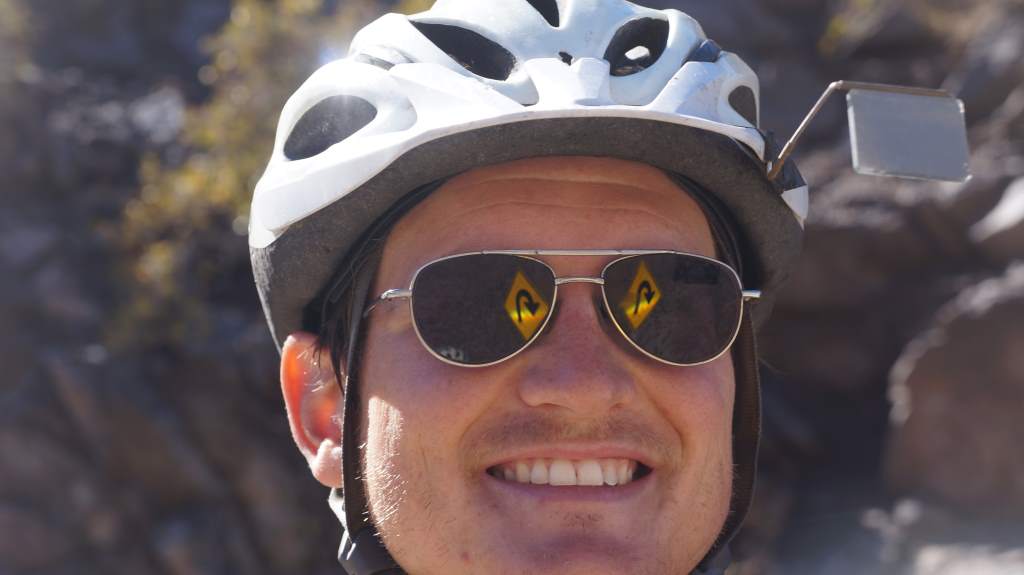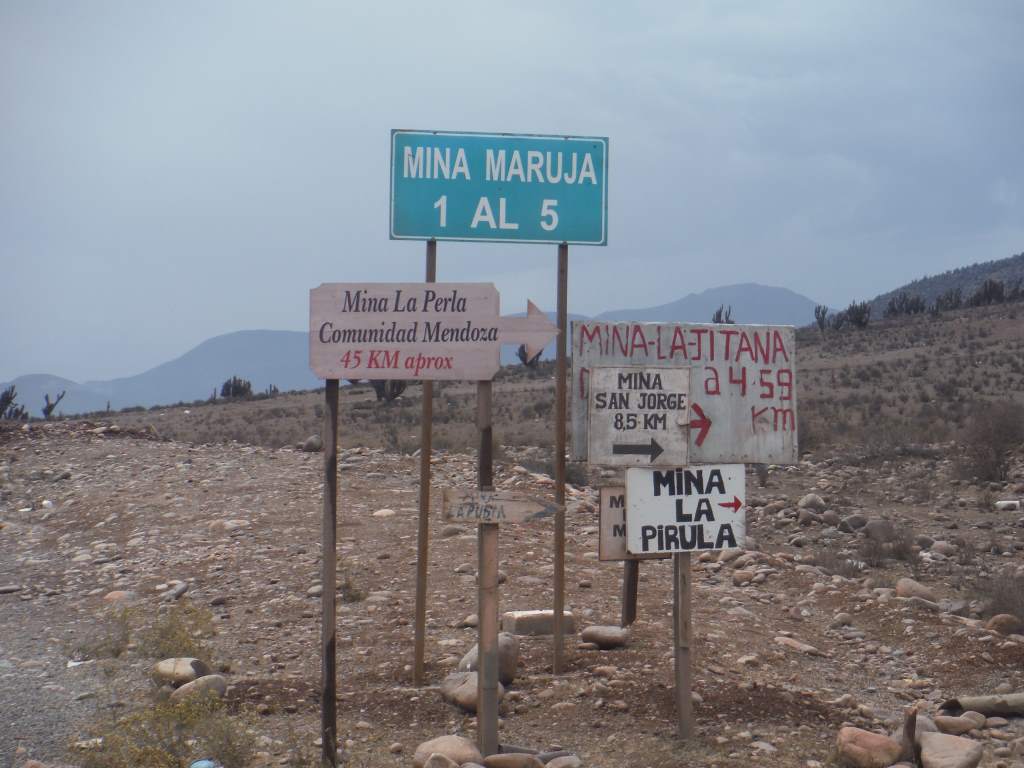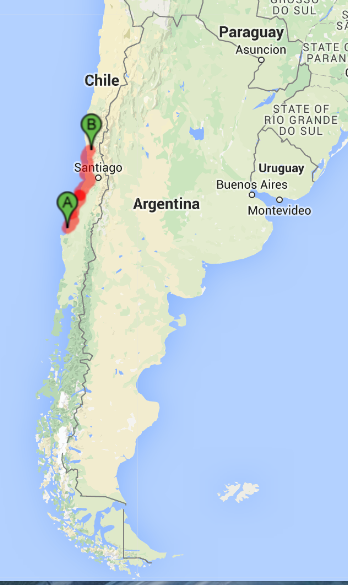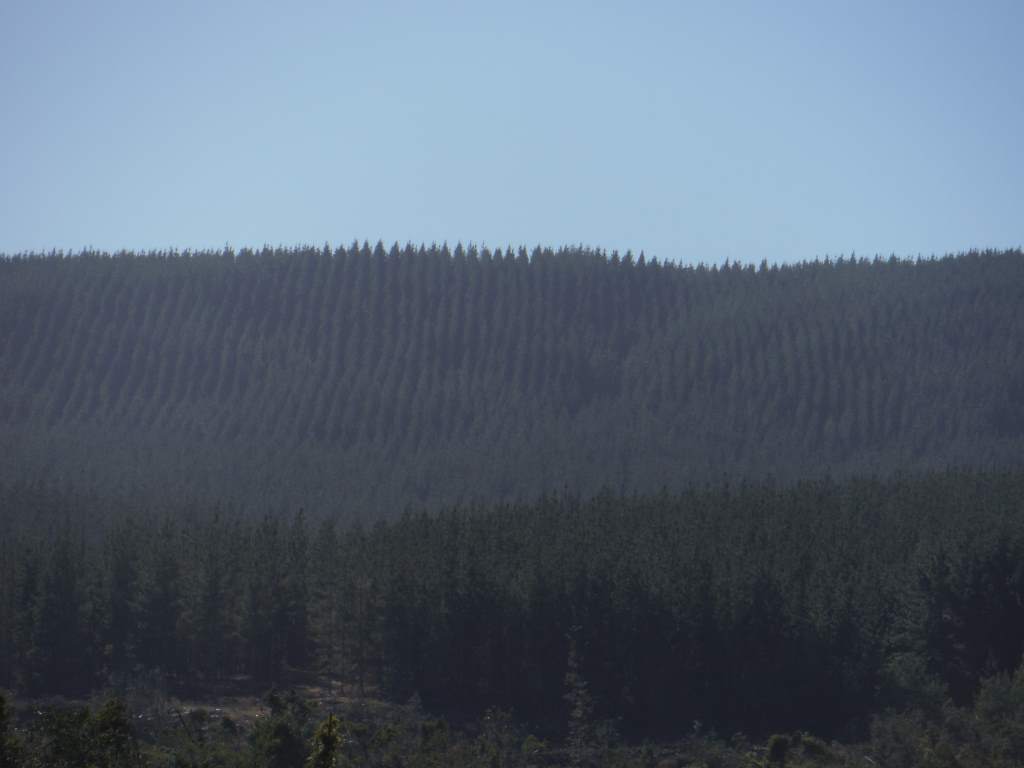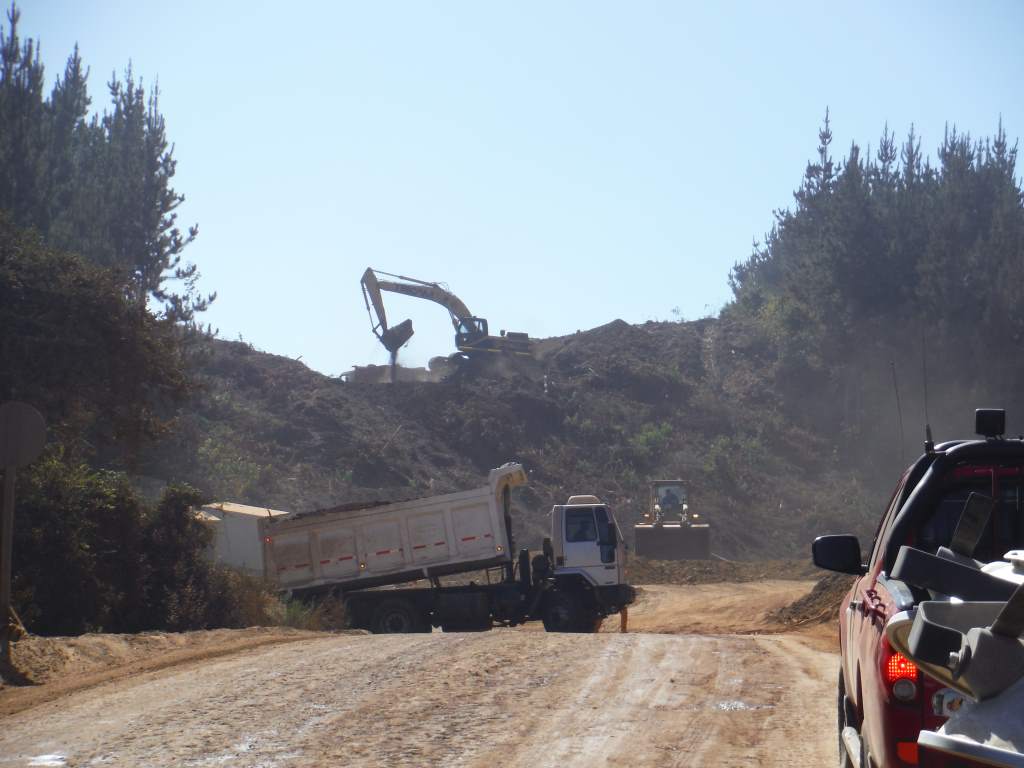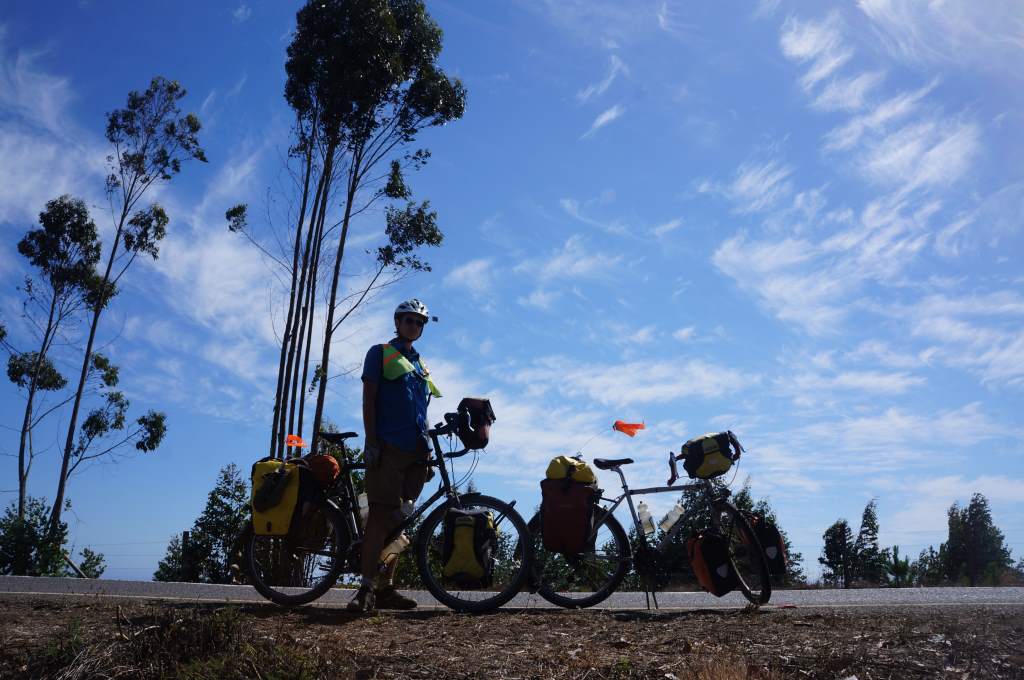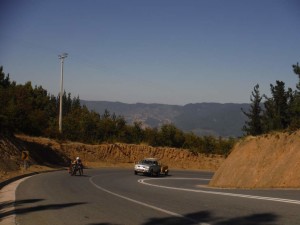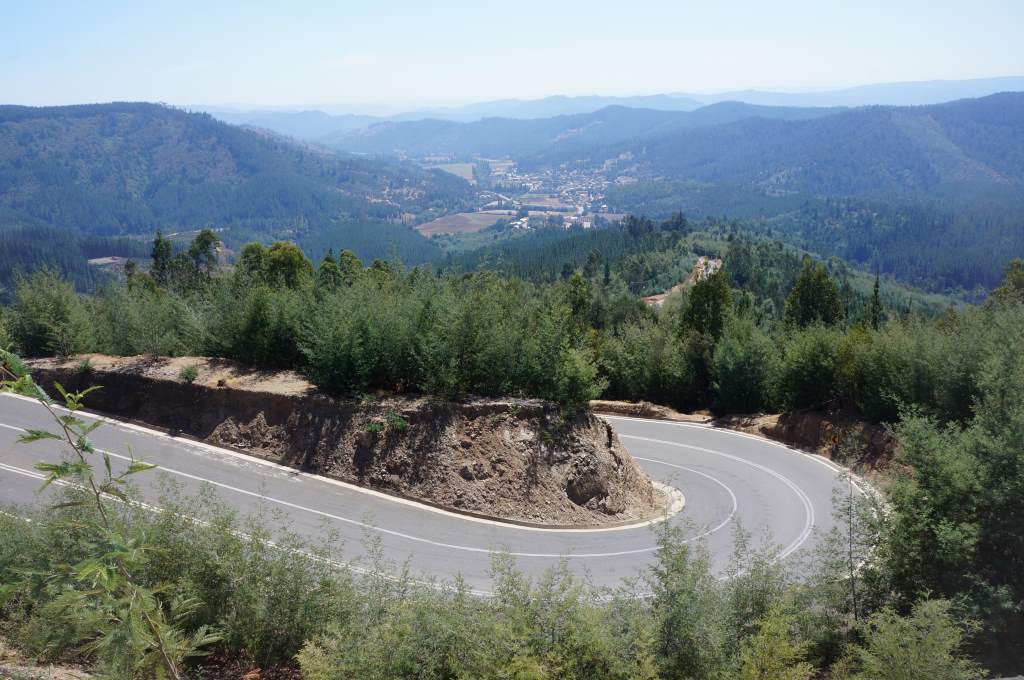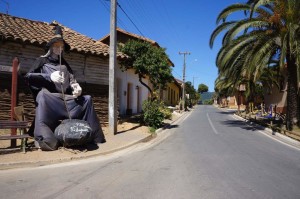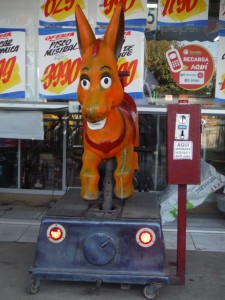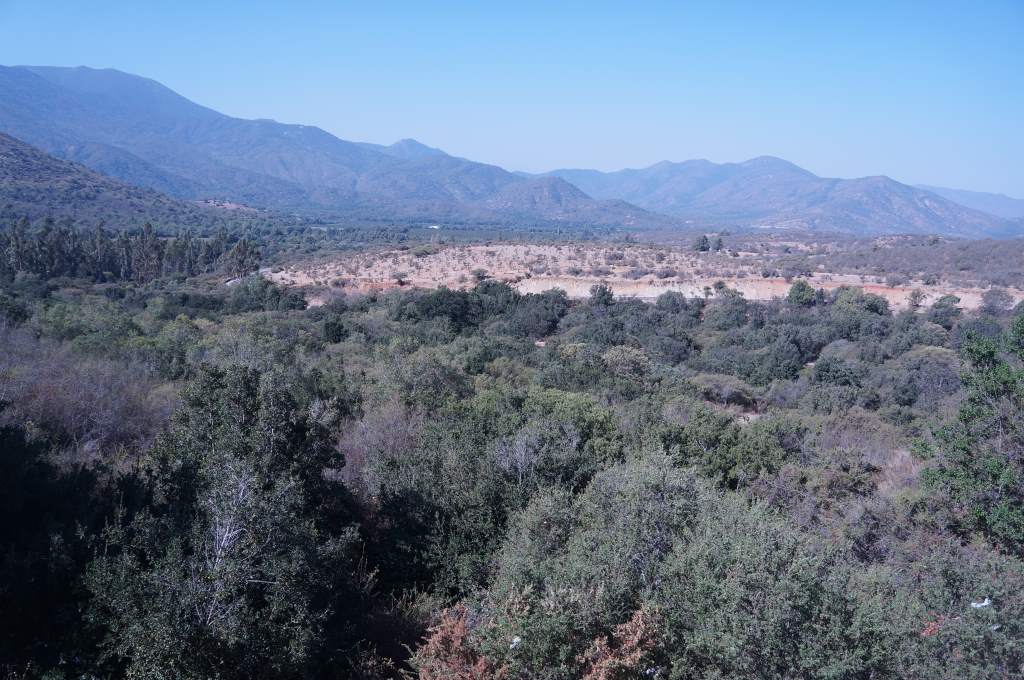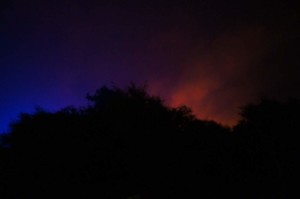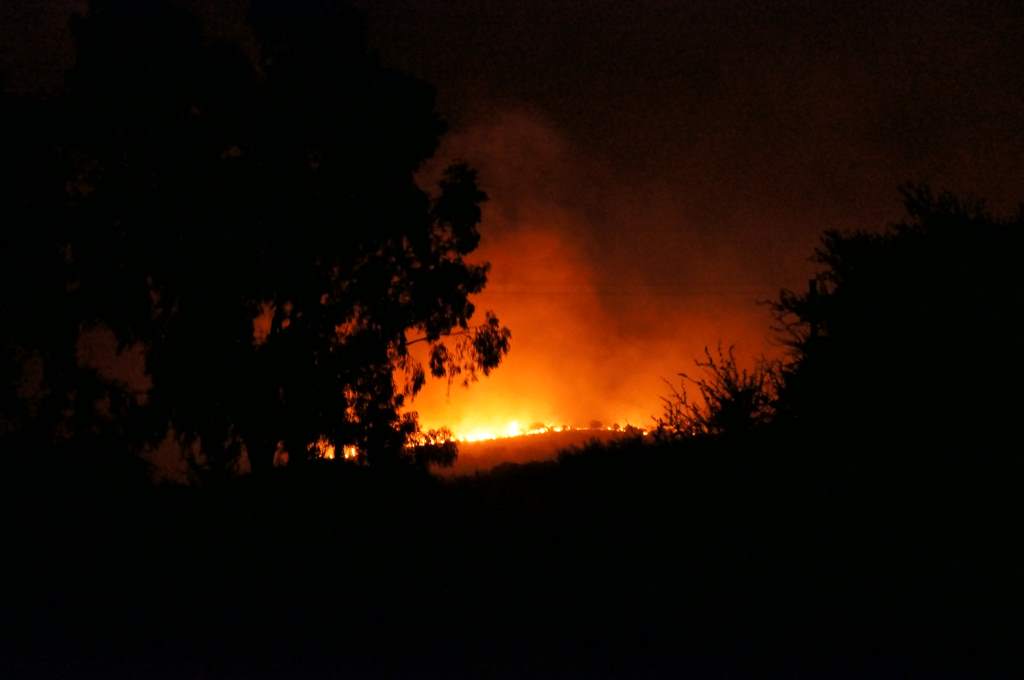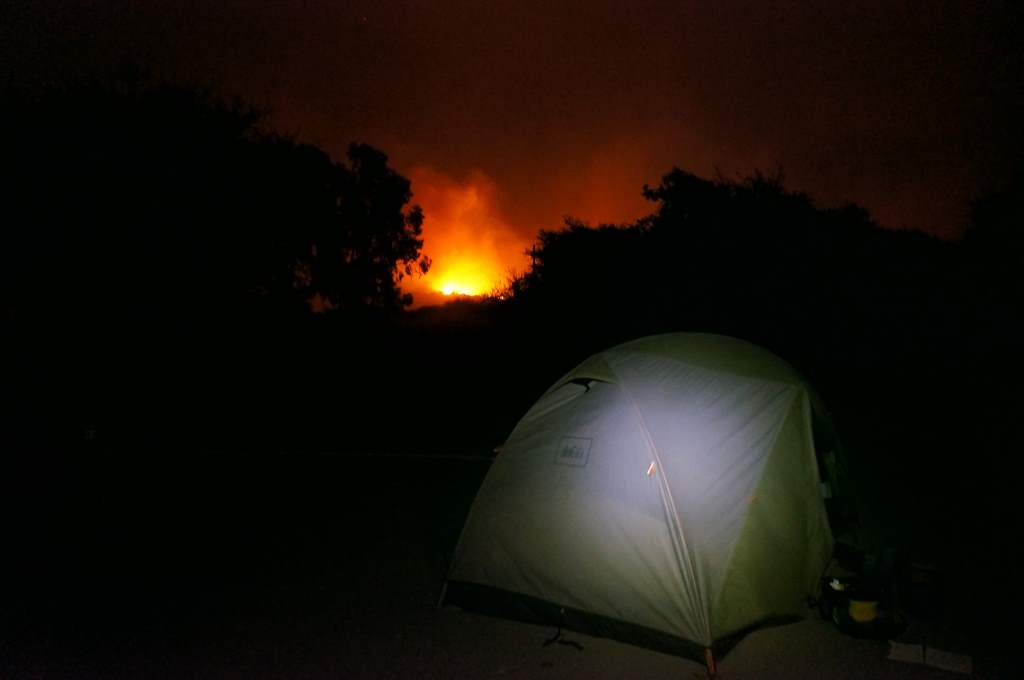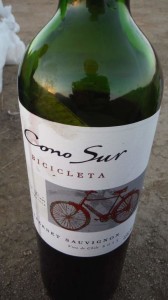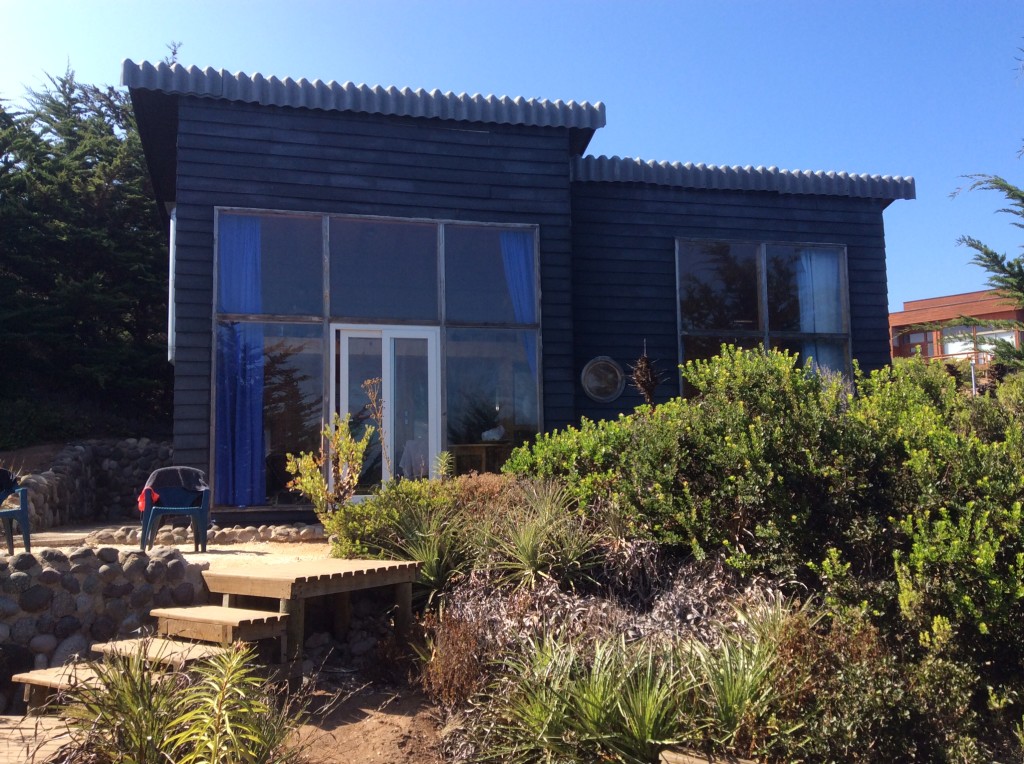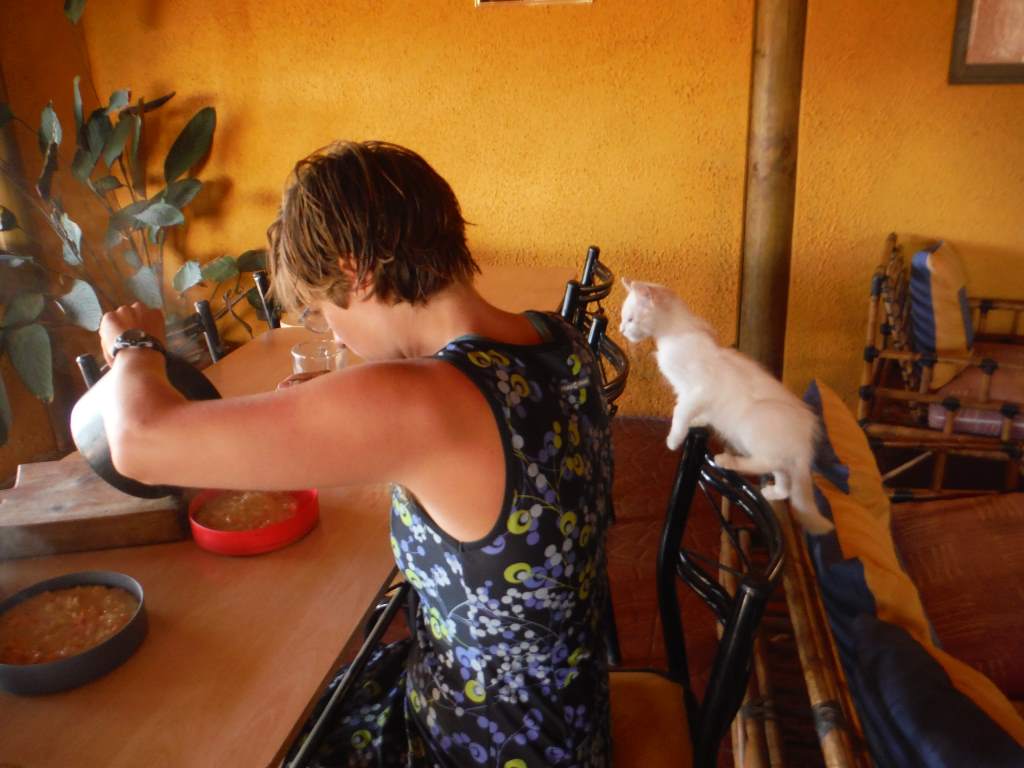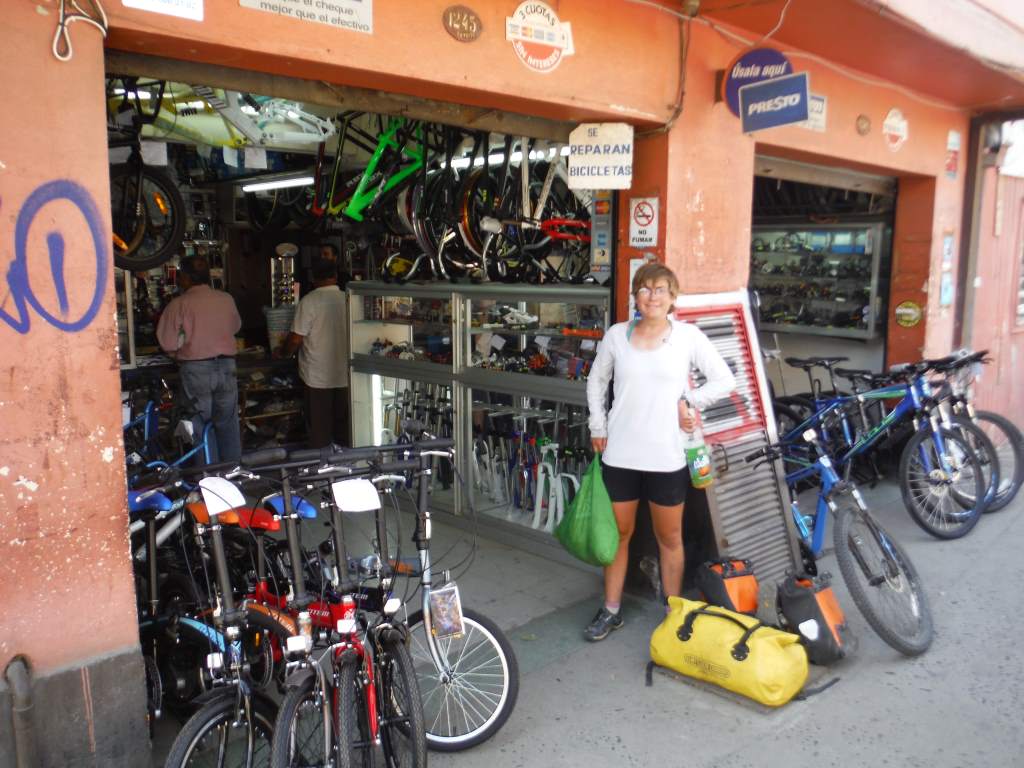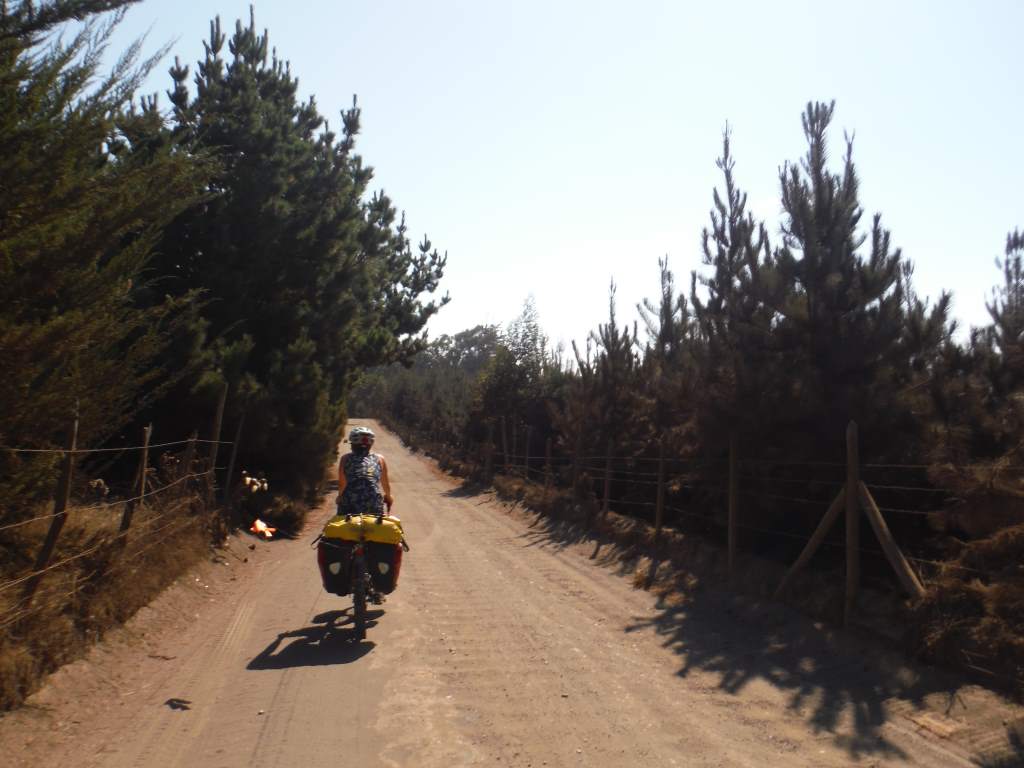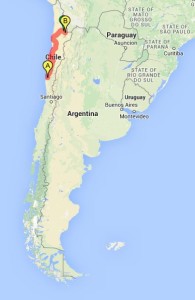 Now that we’ve shared our experiences travelling through the flood ravaged areas of Northern Chile (in the last post), we can focus more on our experiences pedaling through the utterly vast and barren expanse that is the Atacama. From Chanaral it was 4 long days of riding to the next populated area. In this time our only resupply areas were small posadas, which are roadside diners that mainly cater to truckers as they drive across the desert. We witnessed stunning sunsets and sunrises, were awed by the stars, visited a famous (and massive) sculpture of a hand rising from the desert, and were welcomed into the home of a wonderful Chilean family. In short, it was an incredible week of riding!
Now that we’ve shared our experiences travelling through the flood ravaged areas of Northern Chile (in the last post), we can focus more on our experiences pedaling through the utterly vast and barren expanse that is the Atacama. From Chanaral it was 4 long days of riding to the next populated area. In this time our only resupply areas were small posadas, which are roadside diners that mainly cater to truckers as they drive across the desert. We witnessed stunning sunsets and sunrises, were awed by the stars, visited a famous (and massive) sculpture of a hand rising from the desert, and were welcomed into the home of a wonderful Chilean family. In short, it was an incredible week of riding!
One of the best things about this part of the desert is how easy it is to camp. There are no spiny things to worry about, no mosquitoes to sting us, and no ants to eat our tent. We can walk off the main highway and set up just about anywhere. Once night falls, the wind dies down, traffic tapers off, and it’s like we have the whole vast expanse to ourselves. We spent a few nights camping this way:
We saw some incredible sunsets and sunrises, too:
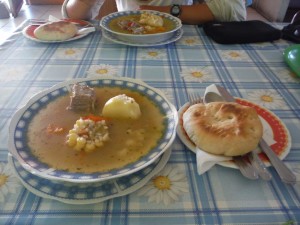 At the posadas we often stopped to get their fixed lunch menu and to fill up on water. In the US, restaurants are expected to have multiple menu options, but that is not the case here. We love it that the offerings are simple, hearty fare for a very cheap price. For example, we got a small salad, a bowl of hearty chicken soup, and a plate of fried fish with rice for a whopping $5.50 each. And this in the middle of the desert! Our options were chicken or fish with the rice, but they had already run out of chicken. At another place we decided just to get the soup, and were surprised when Jason’s dish arrived with a chicken neck included!
At the posadas we often stopped to get their fixed lunch menu and to fill up on water. In the US, restaurants are expected to have multiple menu options, but that is not the case here. We love it that the offerings are simple, hearty fare for a very cheap price. For example, we got a small salad, a bowl of hearty chicken soup, and a plate of fried fish with rice for a whopping $5.50 each. And this in the middle of the desert! Our options were chicken or fish with the rice, but they had already run out of chicken. At another place we decided just to get the soup, and were surprised when Jason’s dish arrived with a chicken neck included!
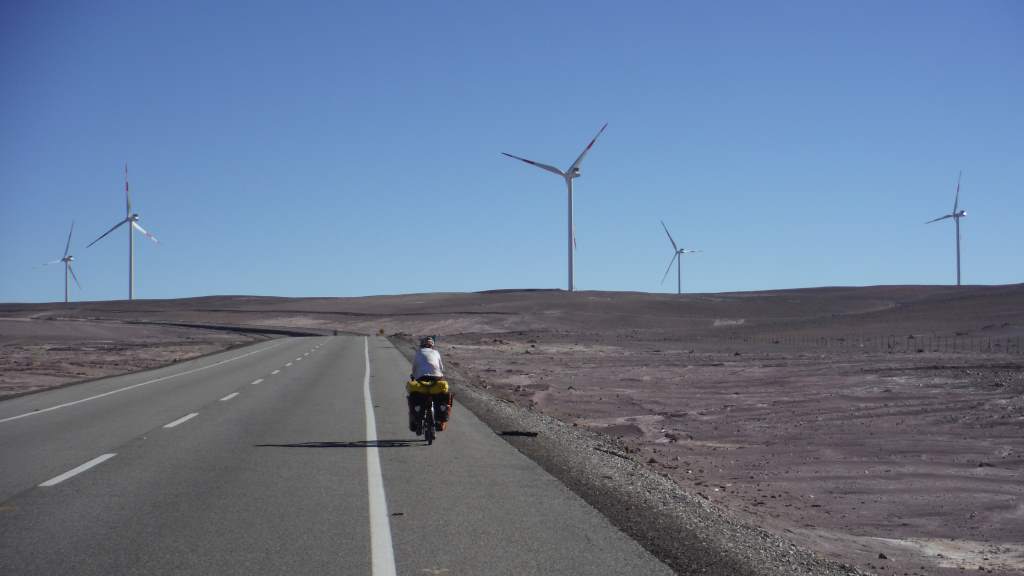
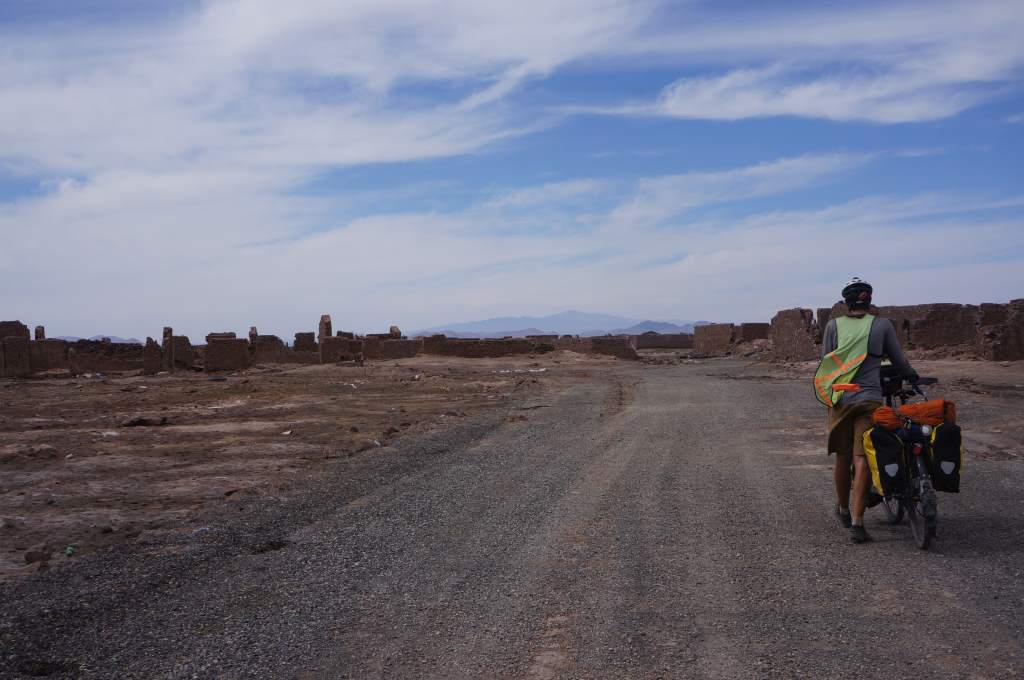 The posadas were sometimes few and far between, at one point we had 101 km between them. For this stretch we simply carried lots of water and kept pedaling. Luckily, the winds were with us for most of the uphill stretches. Over the course of two days we climbed up up up to 7,000′ elevation. Of course, that also means we got to go down down down for the next two days! During the descent we came across the iconic concrete sculpture of the ‘Mano del Desierto’, or ‘Hand of the desert’. It is simply a giant hand that rises out of the featureless sand. Of course, we had ourselves a little photo shoot.
The posadas were sometimes few and far between, at one point we had 101 km between them. For this stretch we simply carried lots of water and kept pedaling. Luckily, the winds were with us for most of the uphill stretches. Over the course of two days we climbed up up up to 7,000′ elevation. Of course, that also means we got to go down down down for the next two days! During the descent we came across the iconic concrete sculpture of the ‘Mano del Desierto’, or ‘Hand of the desert’. It is simply a giant hand that rises out of the featureless sand. Of course, we had ourselves a little photo shoot.
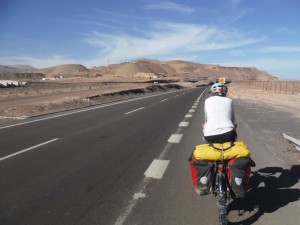 We skipped one of Chile’s largest cities, and continued north towards Bolivia along the main highway. We passed some absolutely massive copper mines. The tailings from these mines are piled up in such a way that they appear to be mountains. Upon closer inspection they are giant terraces upon which over-sized dump trucks drive and deposit their loads. It was just as we passed our first mega-mine that we also hit another big trip milestone: the tropic of Capricorn. It’s hard to believe that we’ll be in the tropics for the remainder of our trip.
We skipped one of Chile’s largest cities, and continued north towards Bolivia along the main highway. We passed some absolutely massive copper mines. The tailings from these mines are piled up in such a way that they appear to be mountains. Upon closer inspection they are giant terraces upon which over-sized dump trucks drive and deposit their loads. It was just as we passed our first mega-mine that we also hit another big trip milestone: the tropic of Capricorn. It’s hard to believe that we’ll be in the tropics for the remainder of our trip.
That same night we slept in a funky hostel run by a retired miner who had built a number of 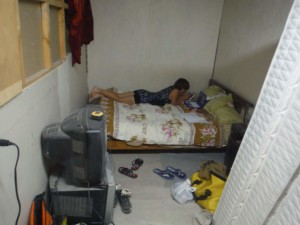 small rooms next to his house. Our room was mostly finished, but still had stacks of mattresses and smelled like paint. We had privacy though – he came in and nailed up a blanket over the room’s window for us. Ha!
small rooms next to his house. Our room was mostly finished, but still had stacks of mattresses and smelled like paint. We had privacy though – he came in and nailed up a blanket over the room’s window for us. Ha!
The next night we camped in the desert again, but this time the stars were almost overshadowed by all the bright lights from the surrounding mines. We are truly in copper country now. Chile has some of the world’s richest copper deposits, and is home to the world’s largest open pit copper mine. Clearly, mining is king around here. We got to spend some time with many of these miners just the next day.
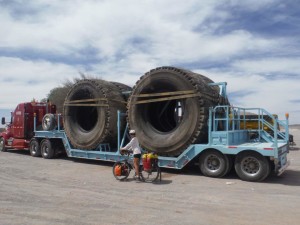 We met a group of mountain bikers in a posada, and they invited us to share a second breakfast with them. Of course we accepted (well, Jason did, I just had coffee). What followed was a fun hour of chatting and laughter. One cyclist, Eduardo, invited us to his house in Calama and drew us a lovely little map. We all set off from the posada at the same time and started pedaling up the hill towards the city.
We met a group of mountain bikers in a posada, and they invited us to share a second breakfast with them. Of course we accepted (well, Jason did, I just had coffee). What followed was a fun hour of chatting and laughter. One cyclist, Eduardo, invited us to his house in Calama and drew us a lovely little map. We all set off from the posada at the same time and started pedaling up the hill towards the city.
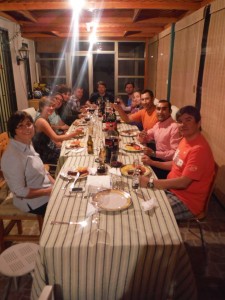 We soon learned that cycling on pavement with heavy bikes is easier than cycling on the dirt with light bikes. Shortly after leaving we passed all the mountain cyclists! We decided we had to stop and take a long rest to give Eduardo a chance to get back to his house before us! It was still a nice ride, and we received a warm welcome from Eduardo and his family. They even organized a Chilean barbecue (asadero) in our honor. We got to spend the evening drinking Chilean wine and laughing with the cycling guys we met earlier. Thank you all so much!
We soon learned that cycling on pavement with heavy bikes is easier than cycling on the dirt with light bikes. Shortly after leaving we passed all the mountain cyclists! We decided we had to stop and take a long rest to give Eduardo a chance to get back to his house before us! It was still a nice ride, and we received a warm welcome from Eduardo and his family. They even organized a Chilean barbecue (asadero) in our honor. We got to spend the evening drinking Chilean wine and laughing with the cycling guys we met earlier. Thank you all so much!
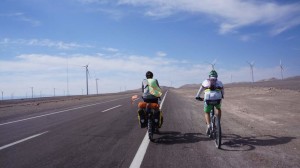 Despite being up late at the party, the next day we headed off towards the tourist town of San Pedro. We climbed up and up to 11,240′ of elevation. This is the highest we’ve been in our entire lives! As we descended towards town we passed many lovely rock and salt formations. Towering above the town is a string of volcanoes along the Chile-Bolivia border. We are spending 3 days resting here, and acclimating to 8,000′ before climbing ever higher into Bolivia.
Despite being up late at the party, the next day we headed off towards the tourist town of San Pedro. We climbed up and up to 11,240′ of elevation. This is the highest we’ve been in our entire lives! As we descended towards town we passed many lovely rock and salt formations. Towering above the town is a string of volcanoes along the Chile-Bolivia border. We are spending 3 days resting here, and acclimating to 8,000′ before climbing ever higher into Bolivia.
Next up, we’ll pedal to over 14,000′ into Bolivia and stay there for weeks as we ride dirt roads through scenery that promises to amaze. Don’t be surprised if we don’t update for a while though, as we expect internet to be increasingly scarce and precious during this stretch. We are very excited to enter a new country!
